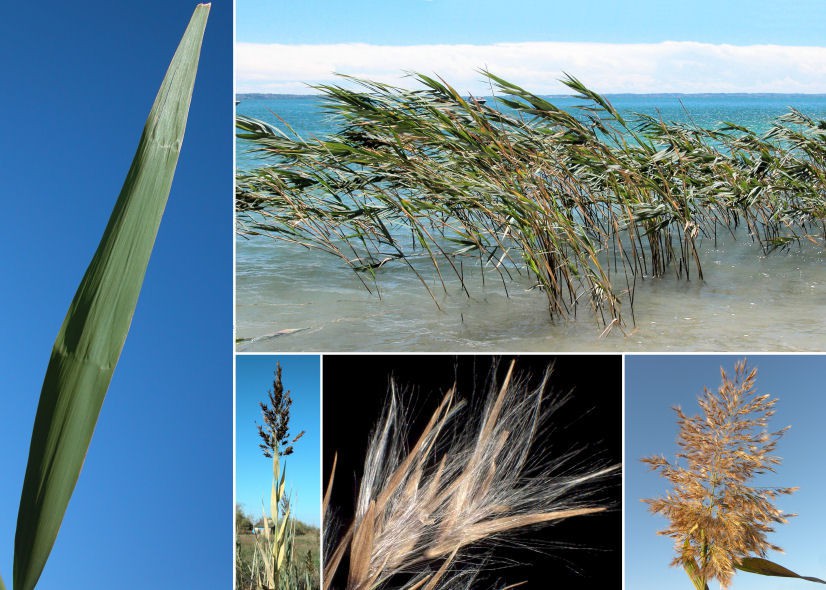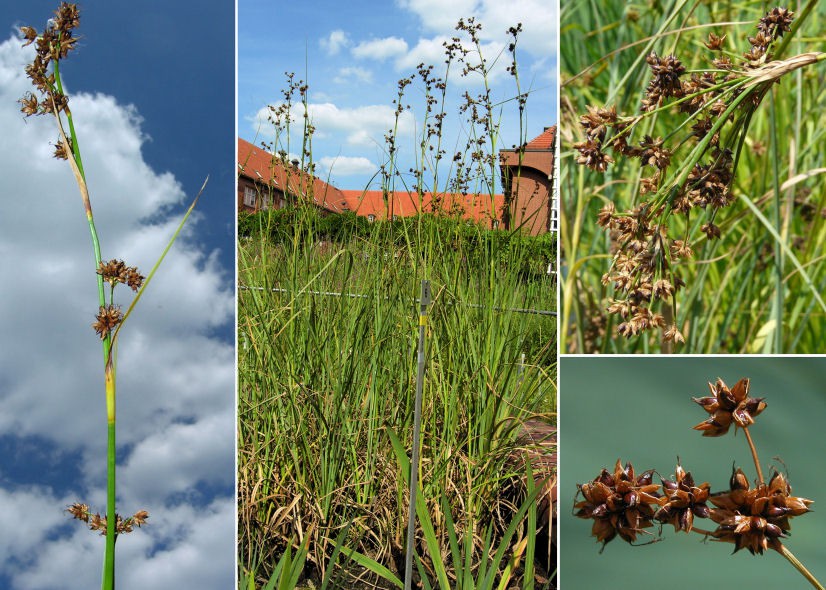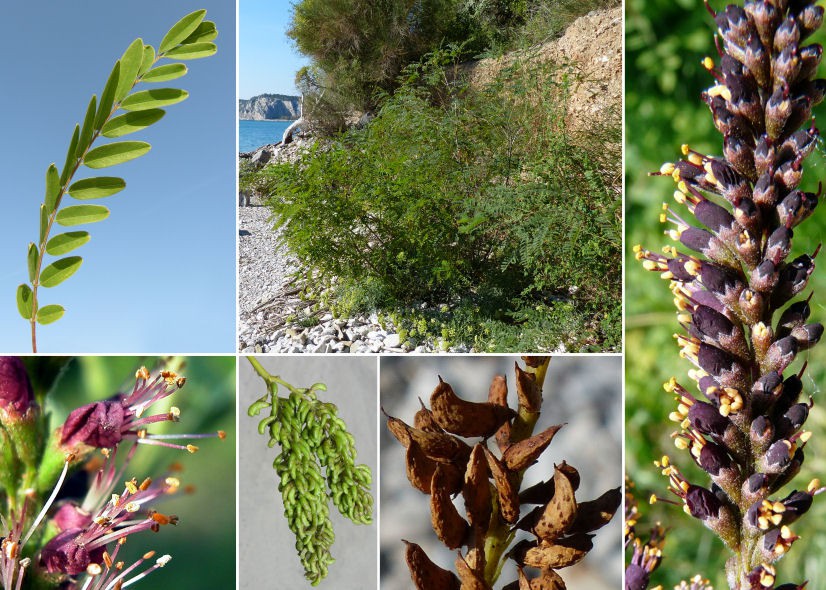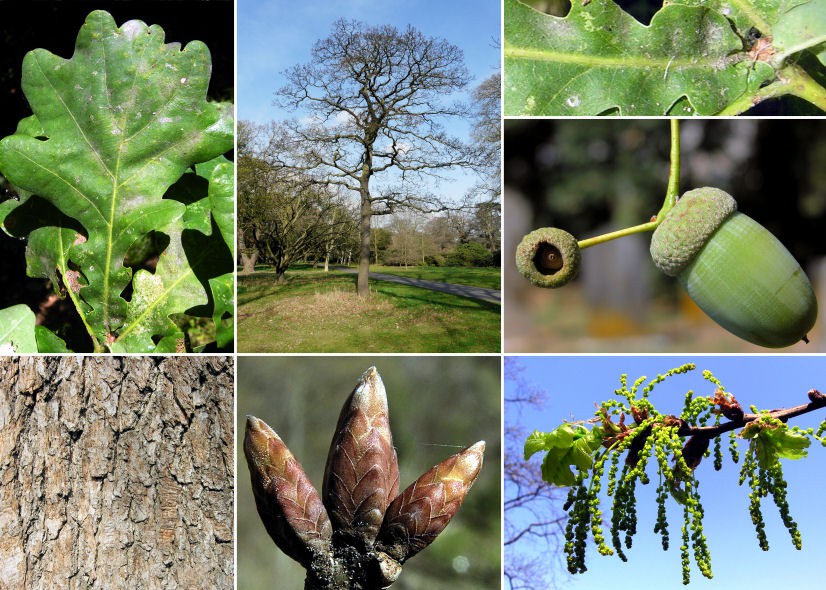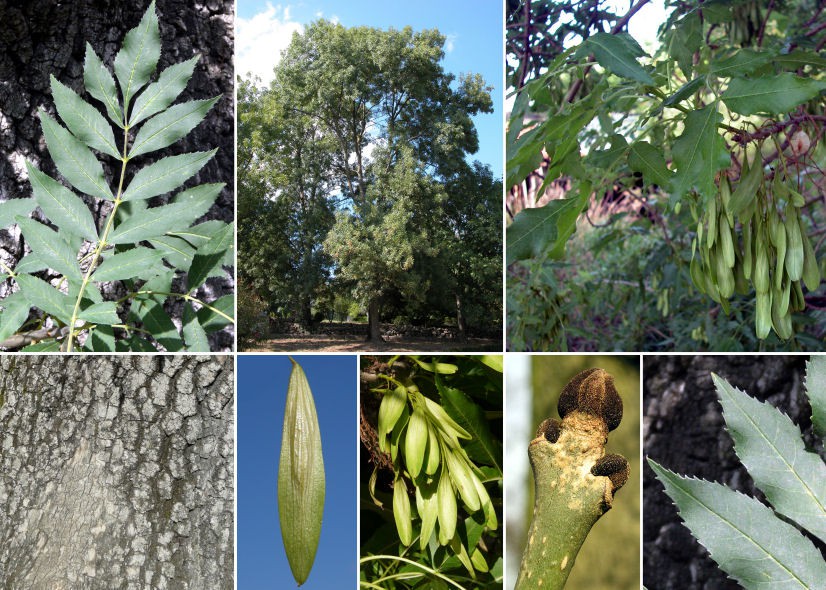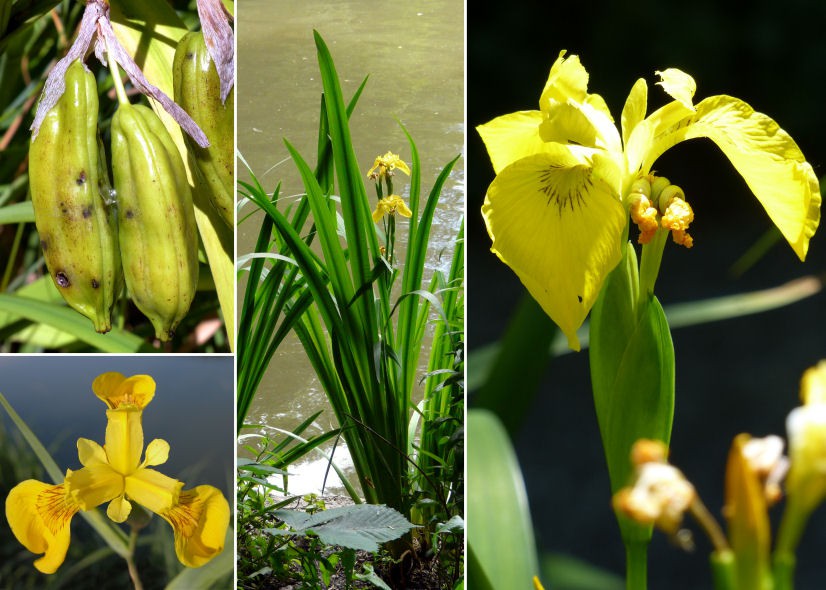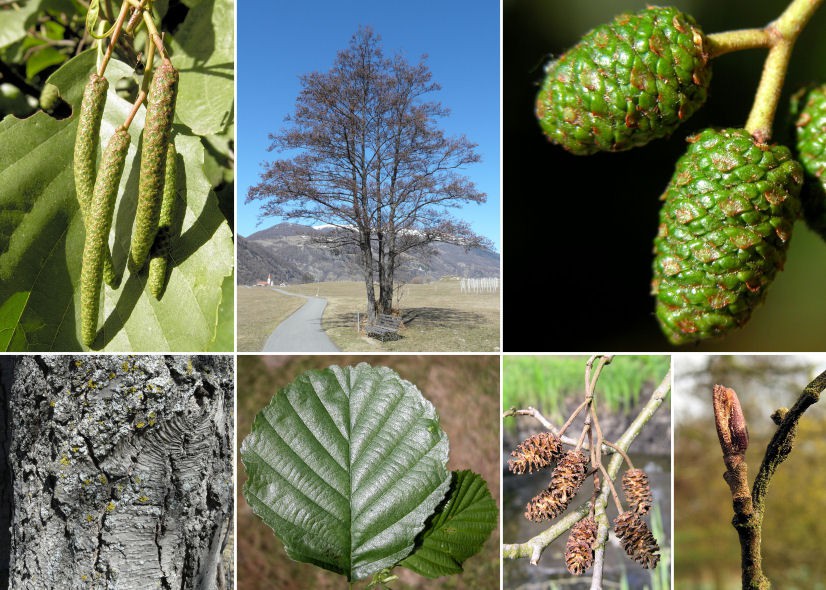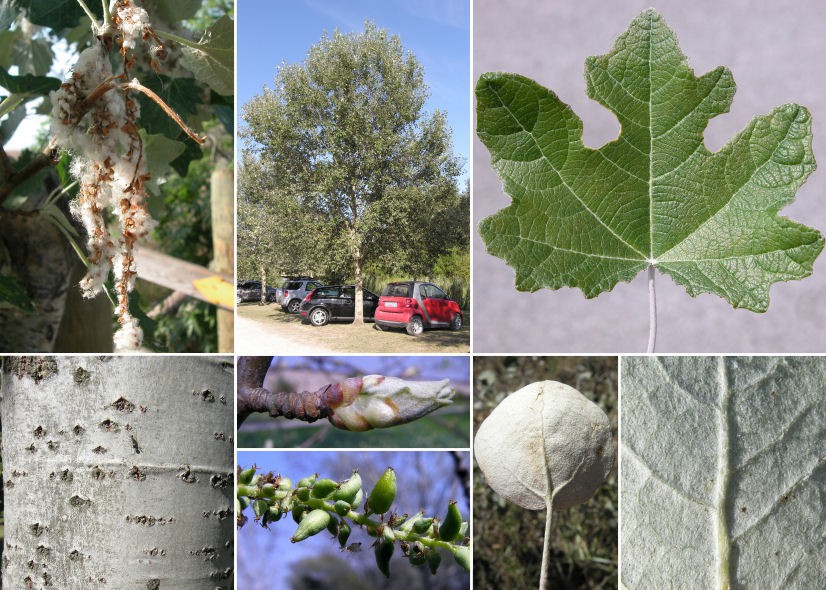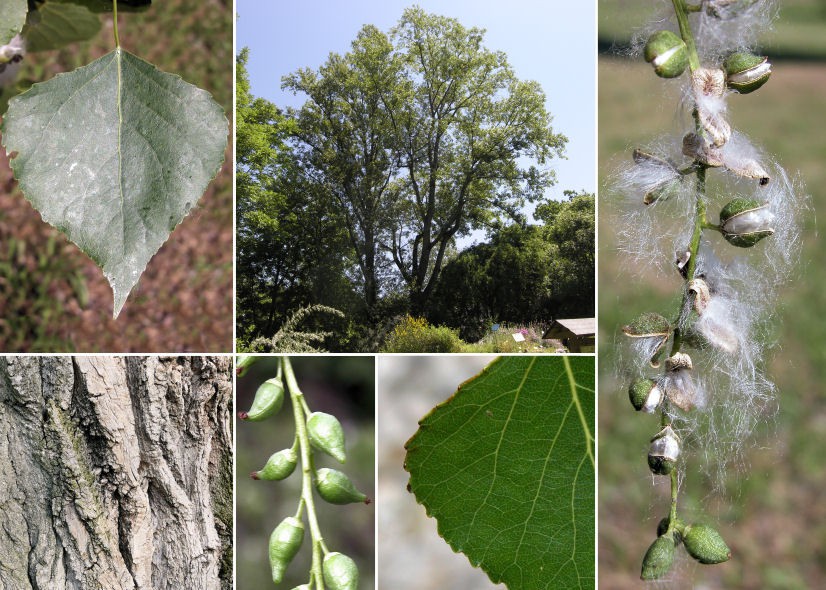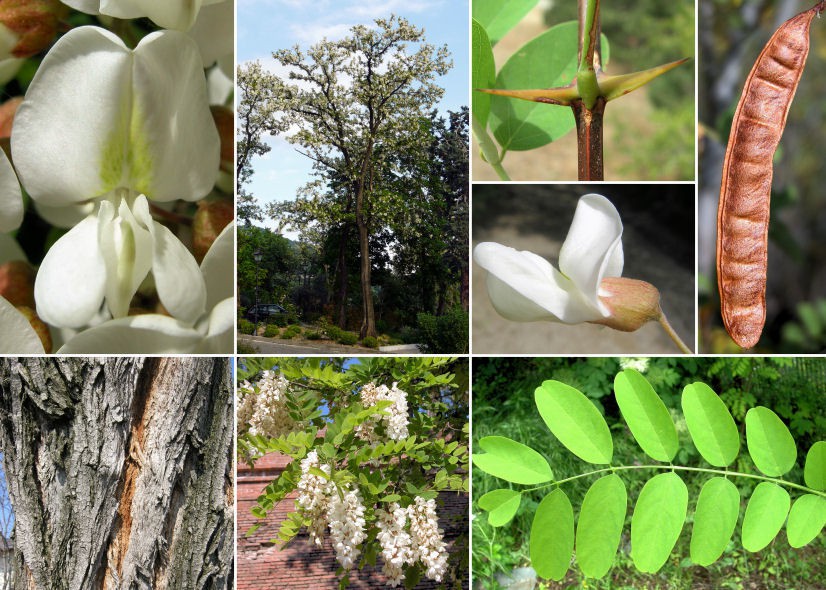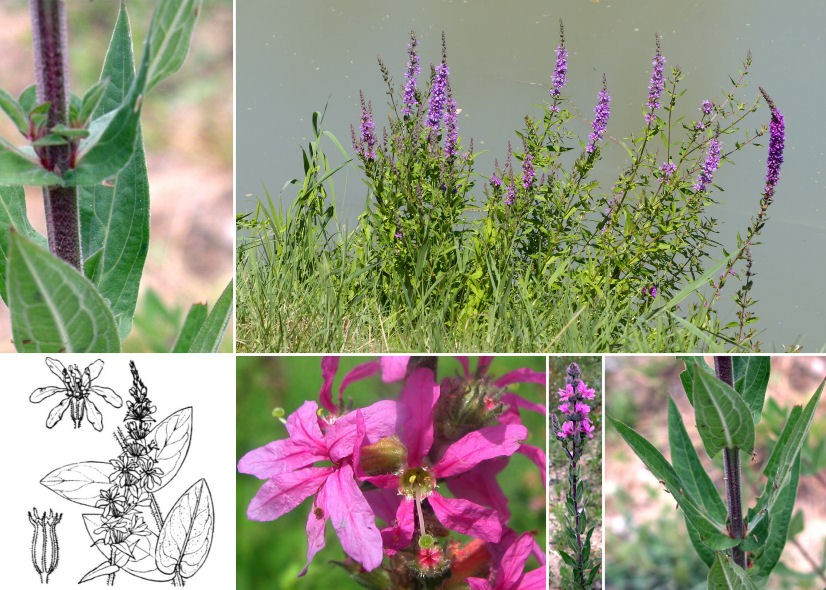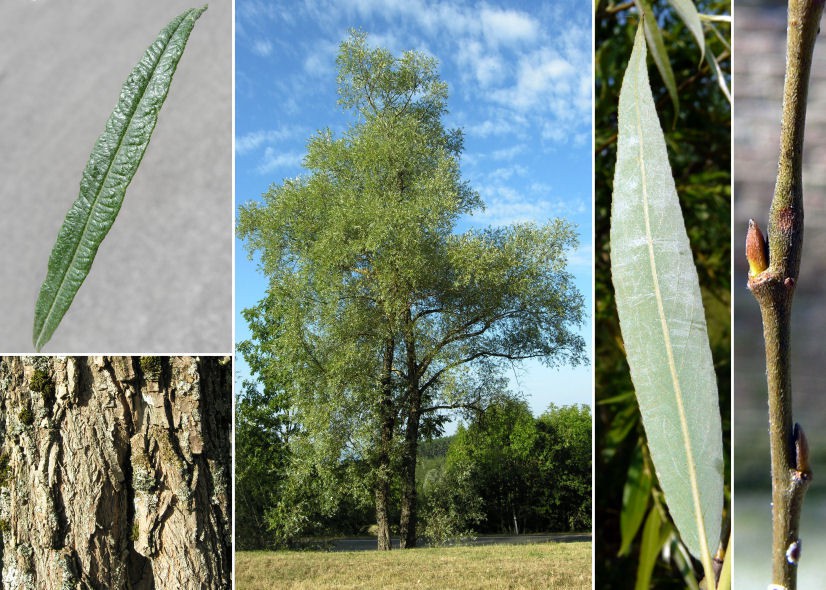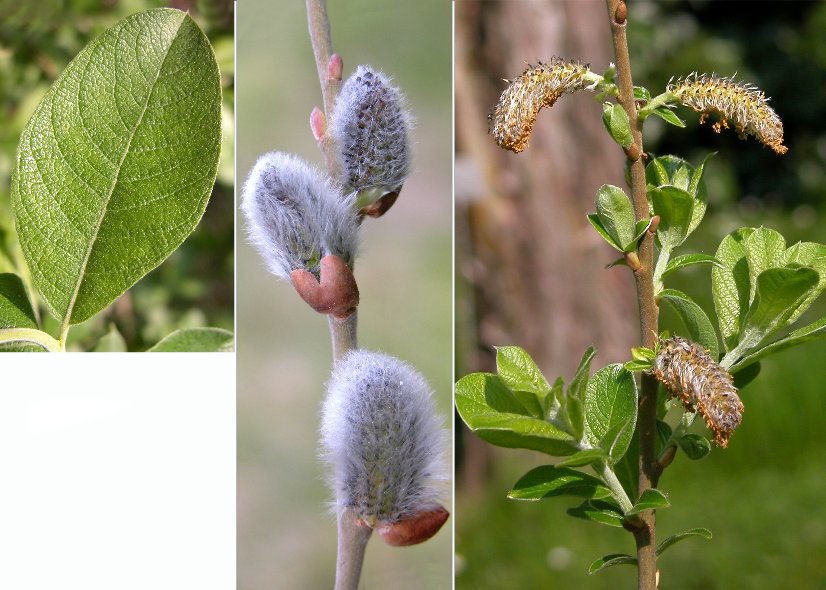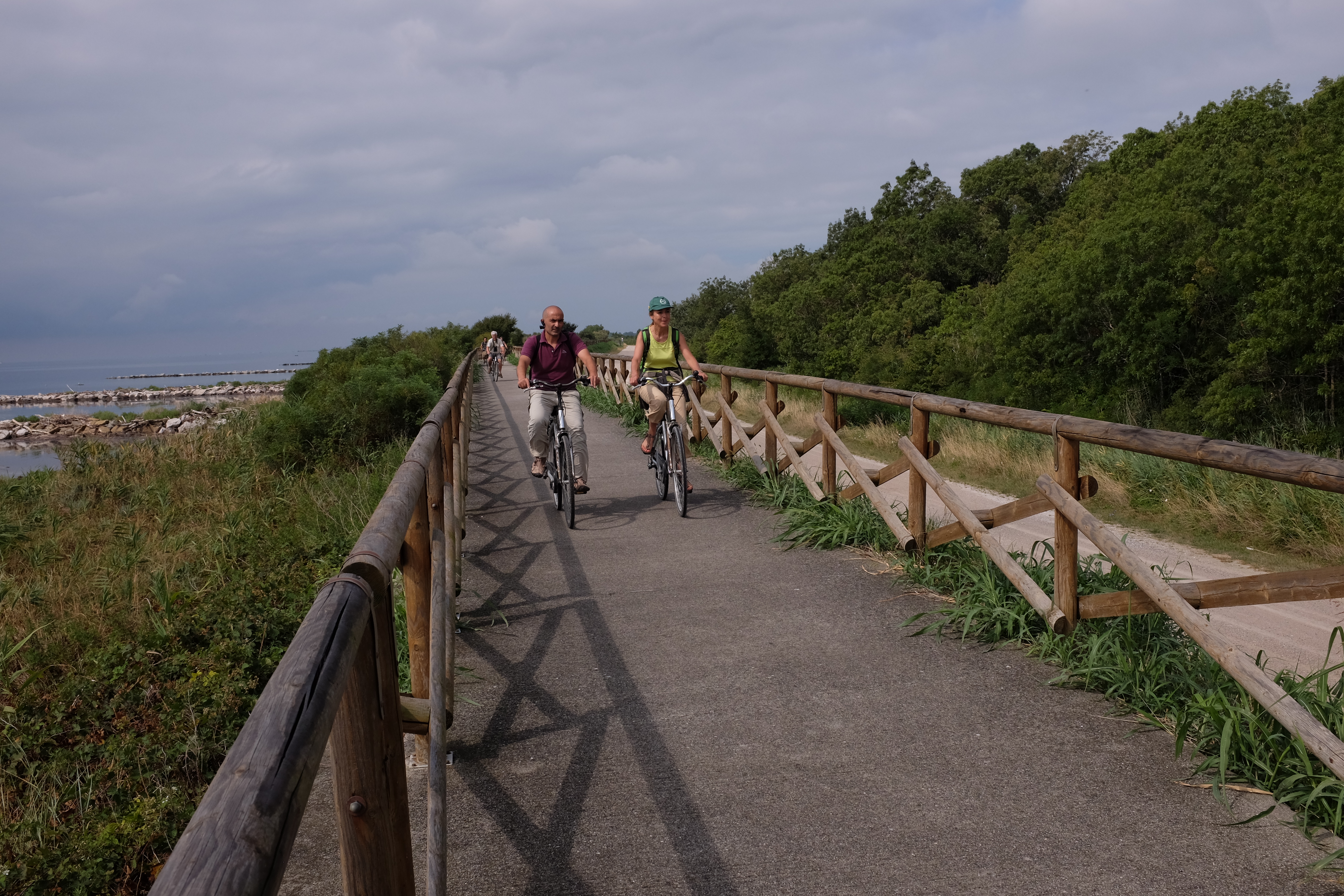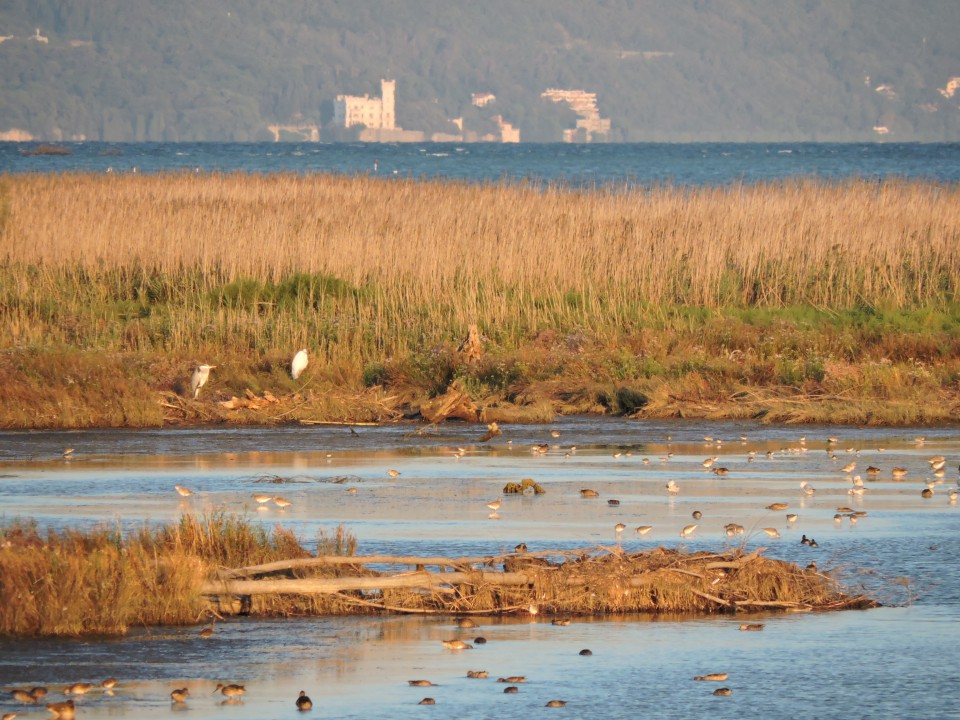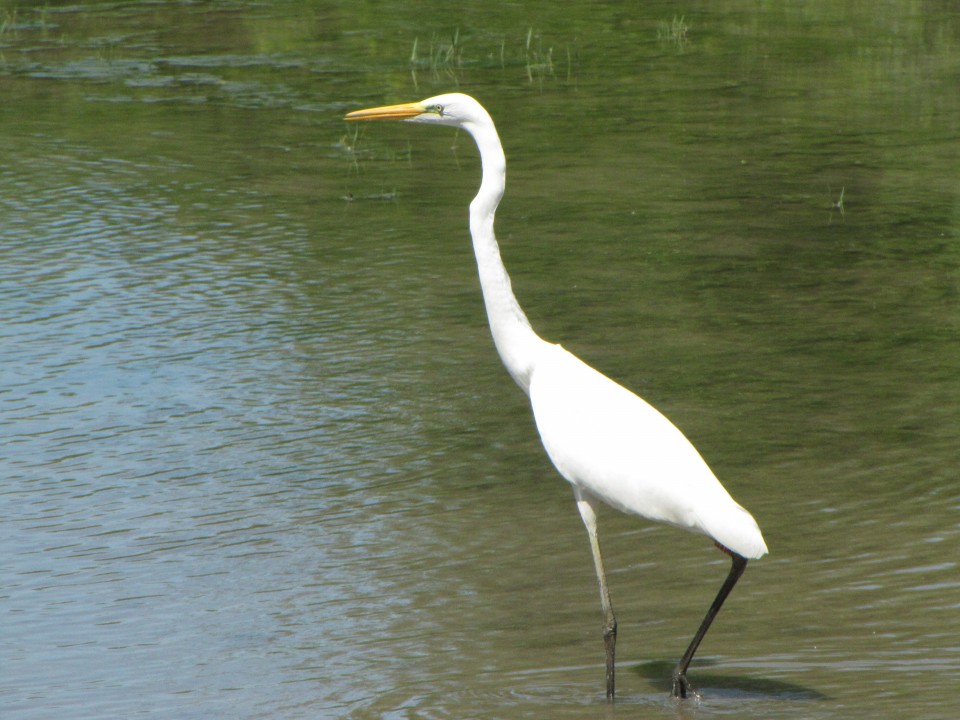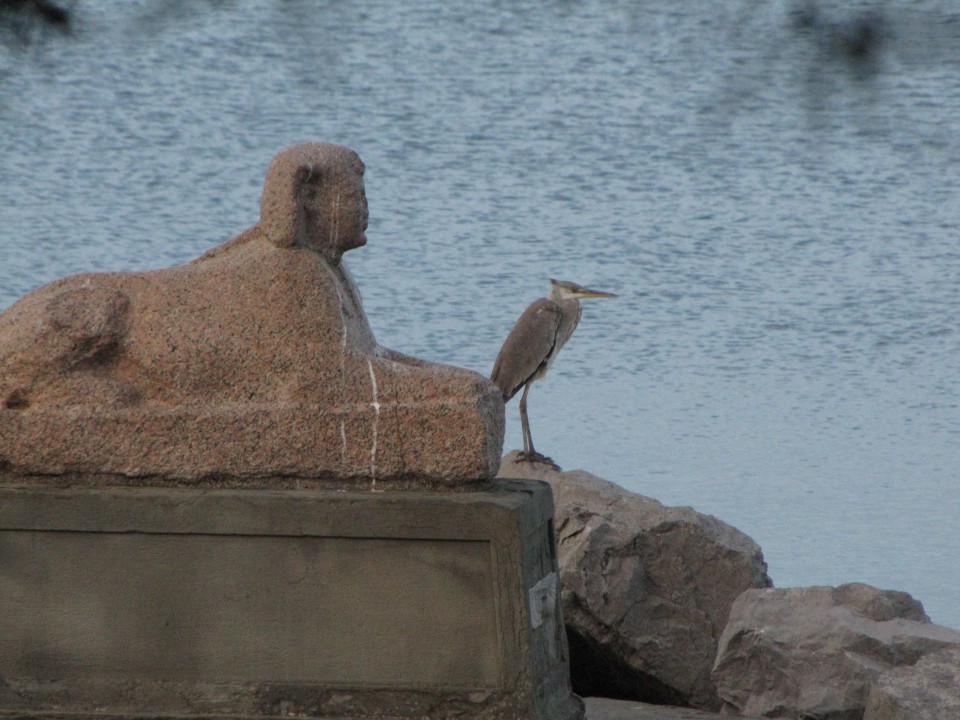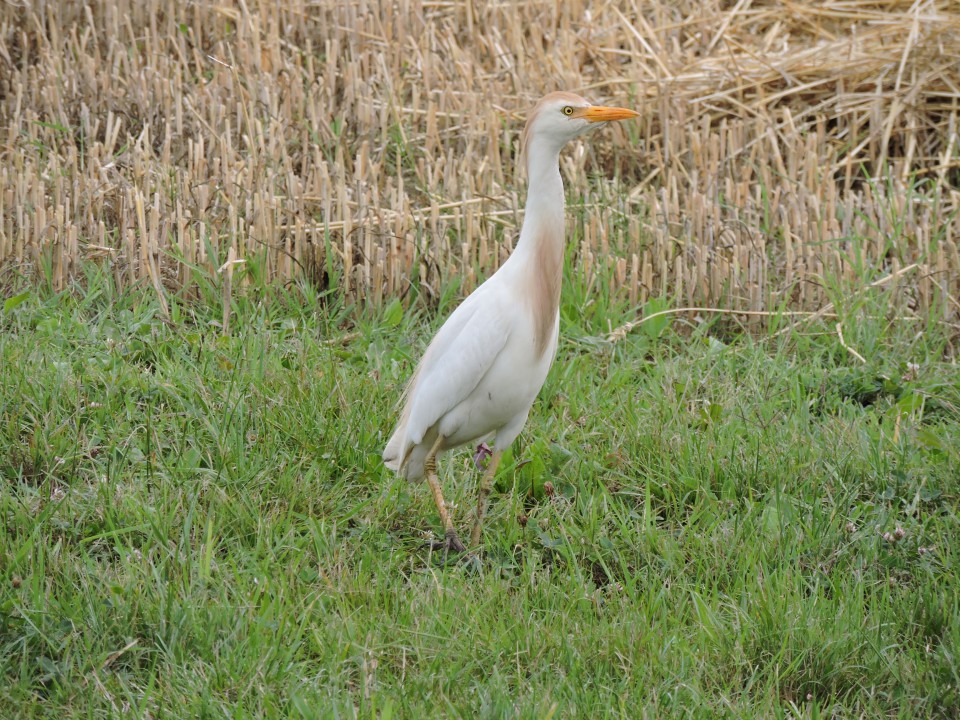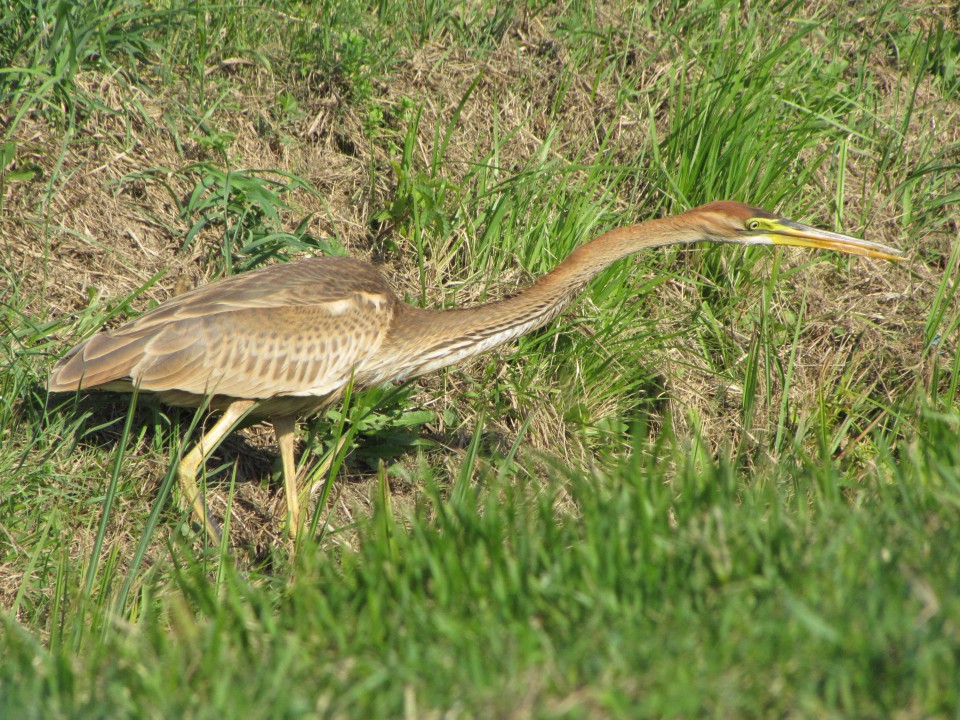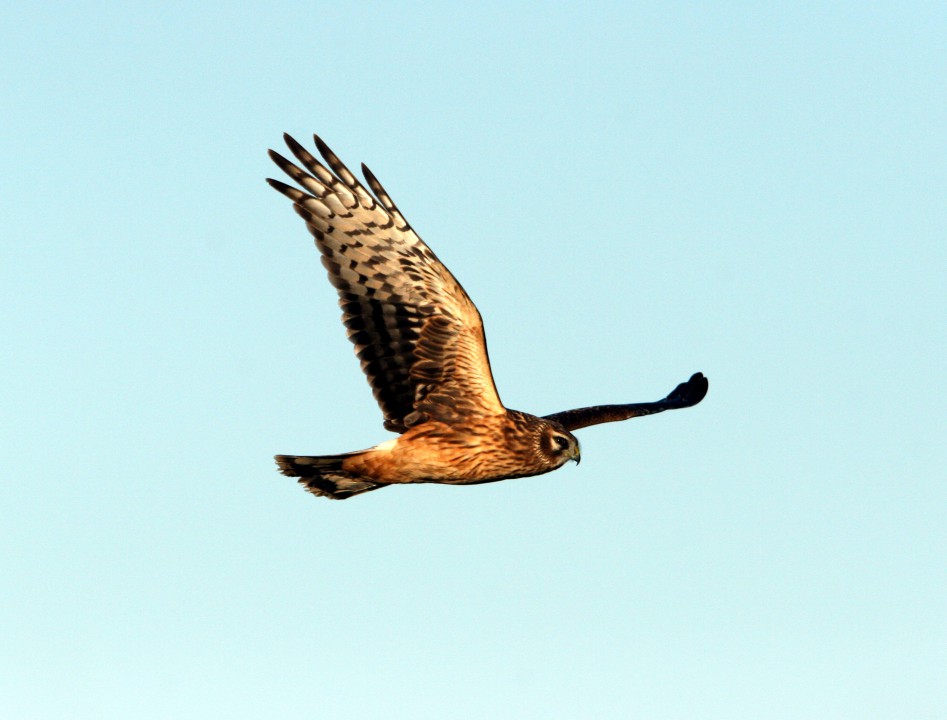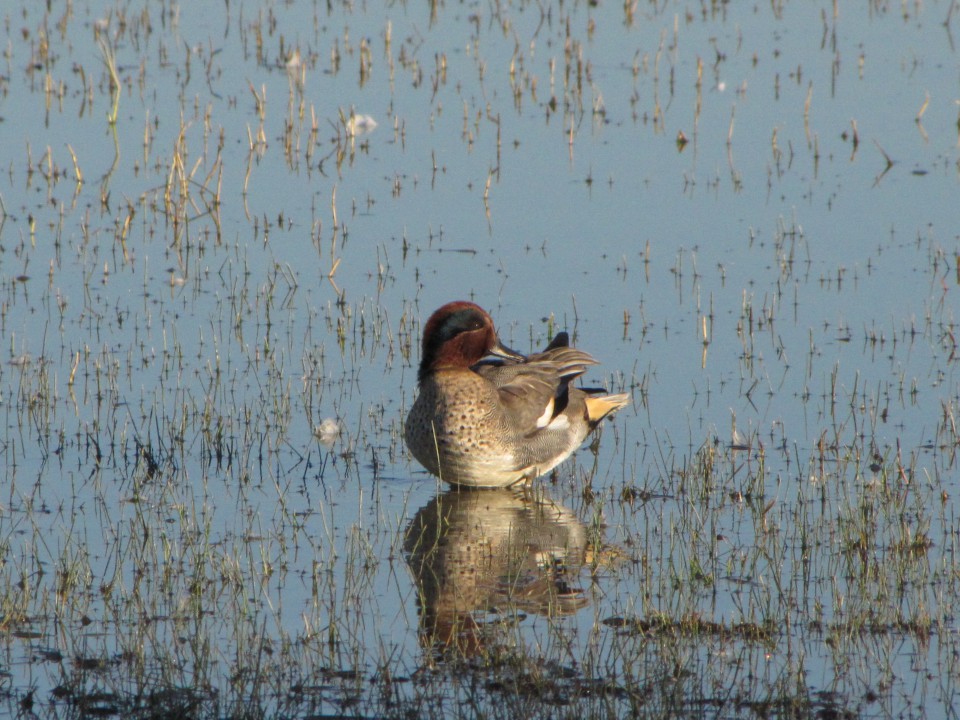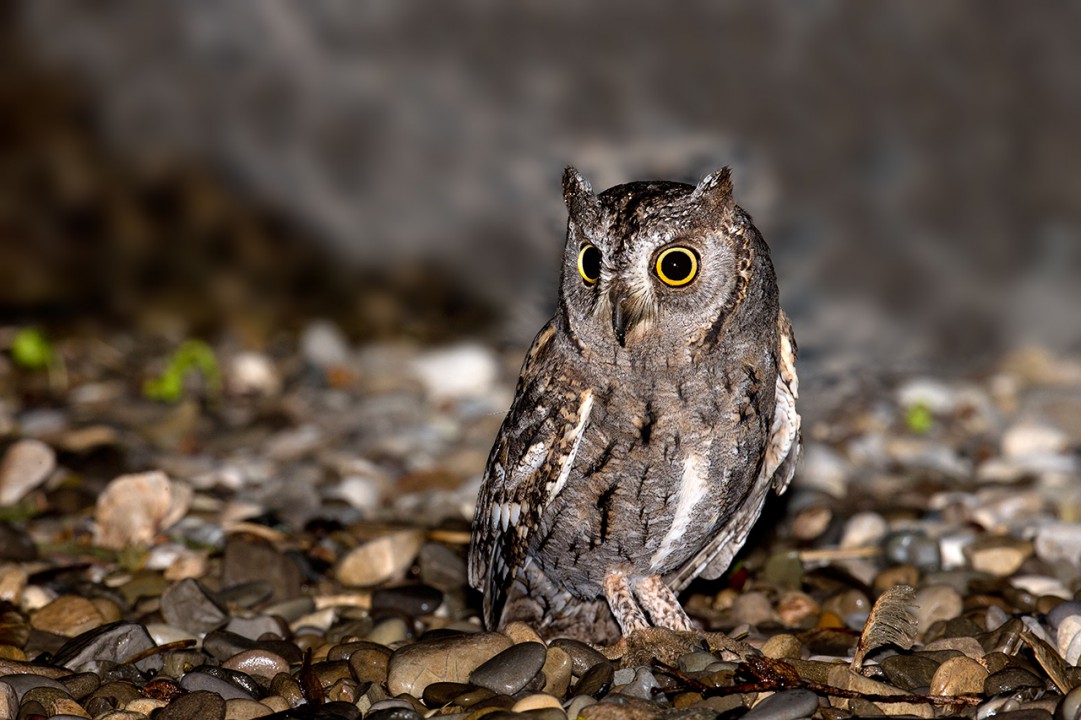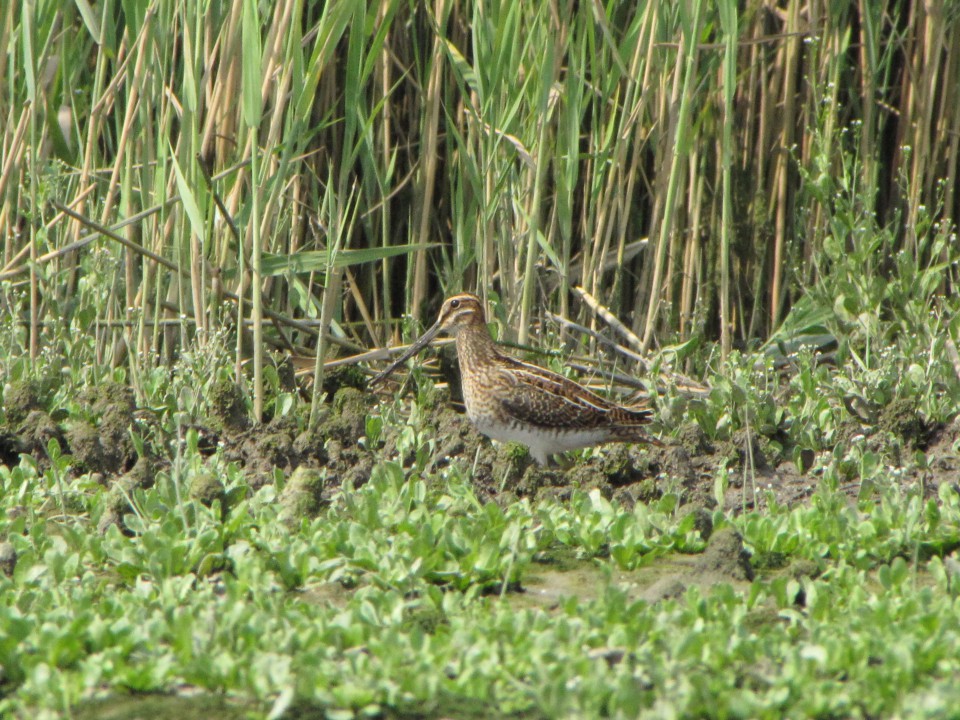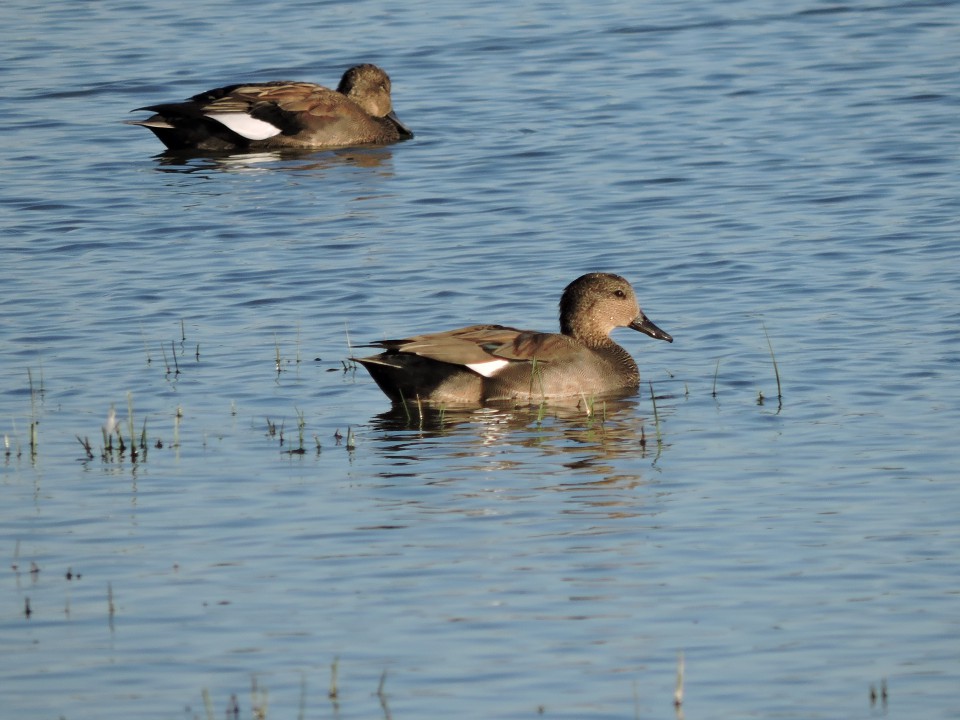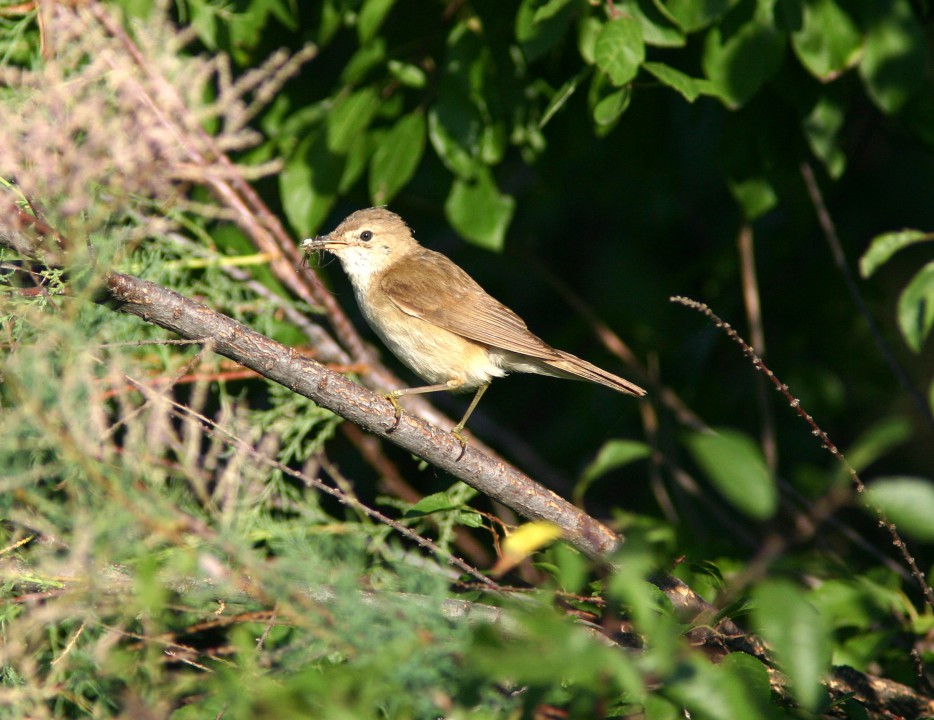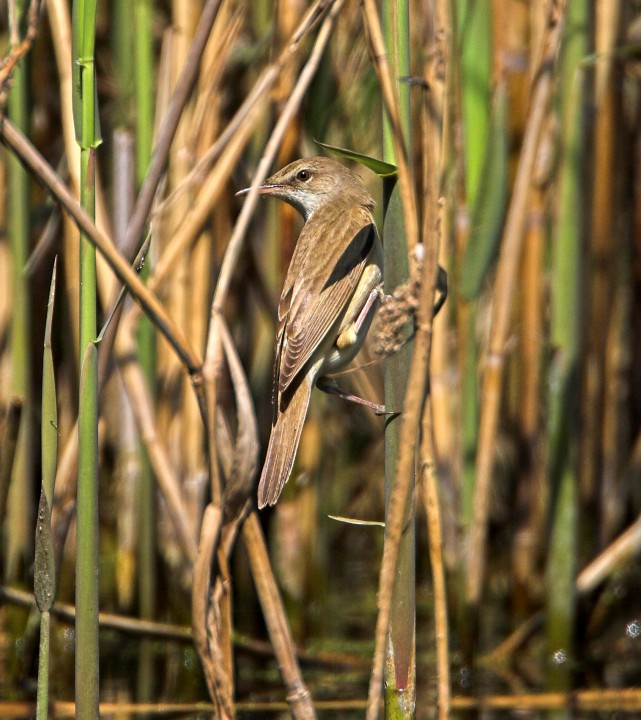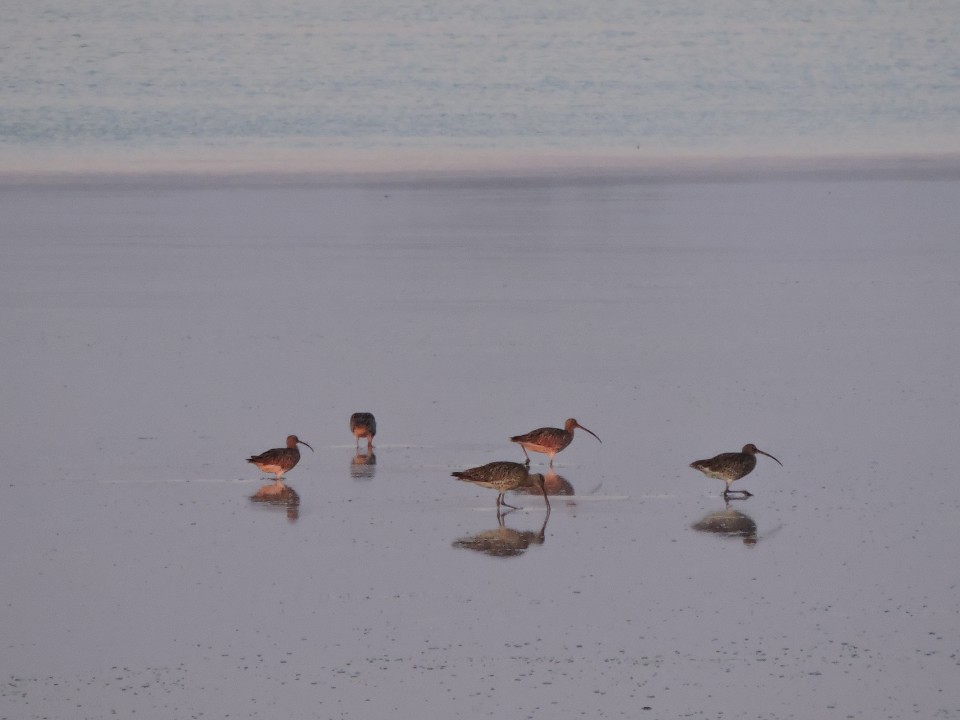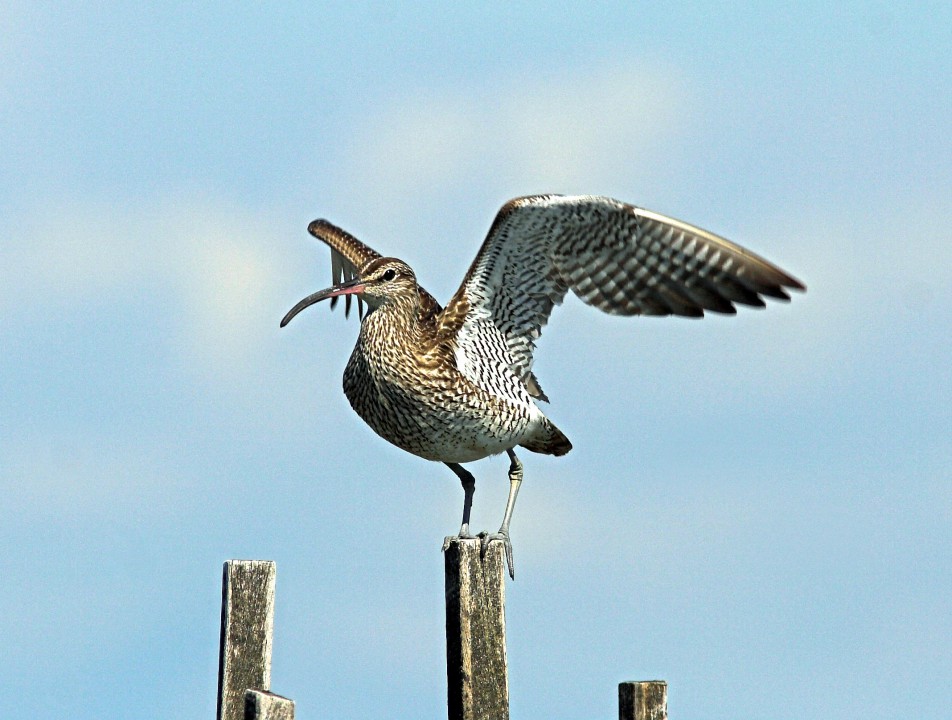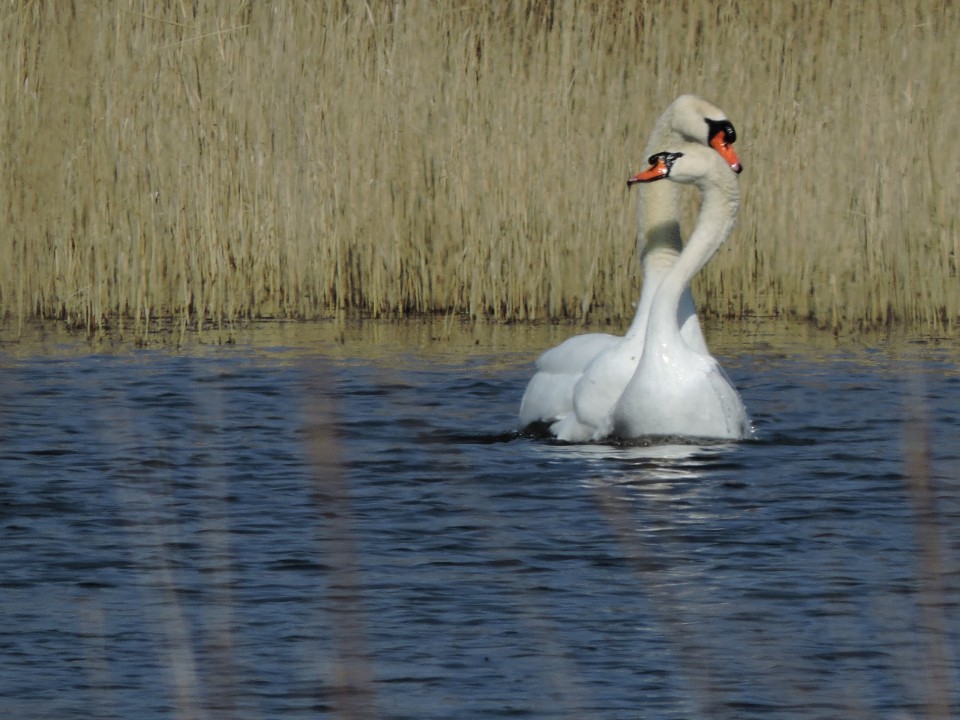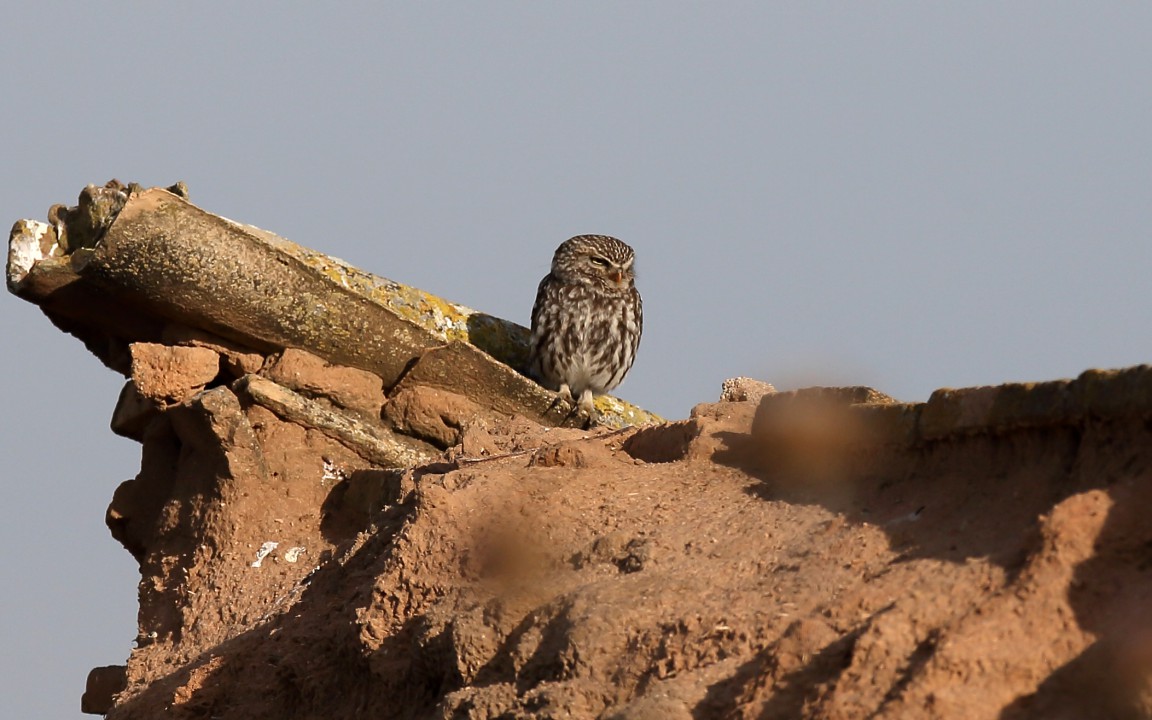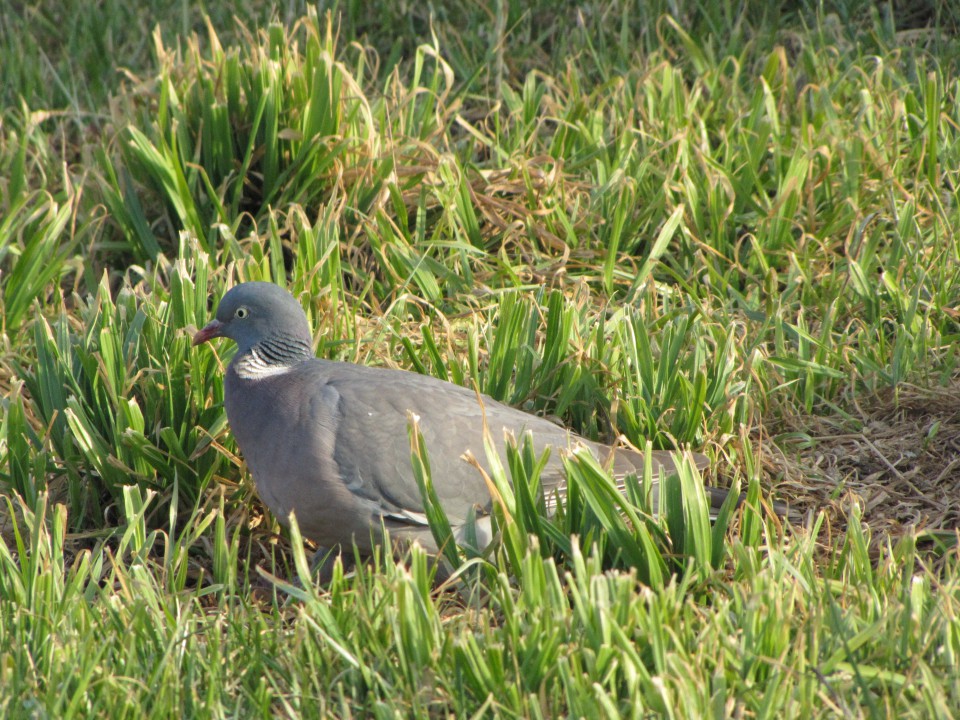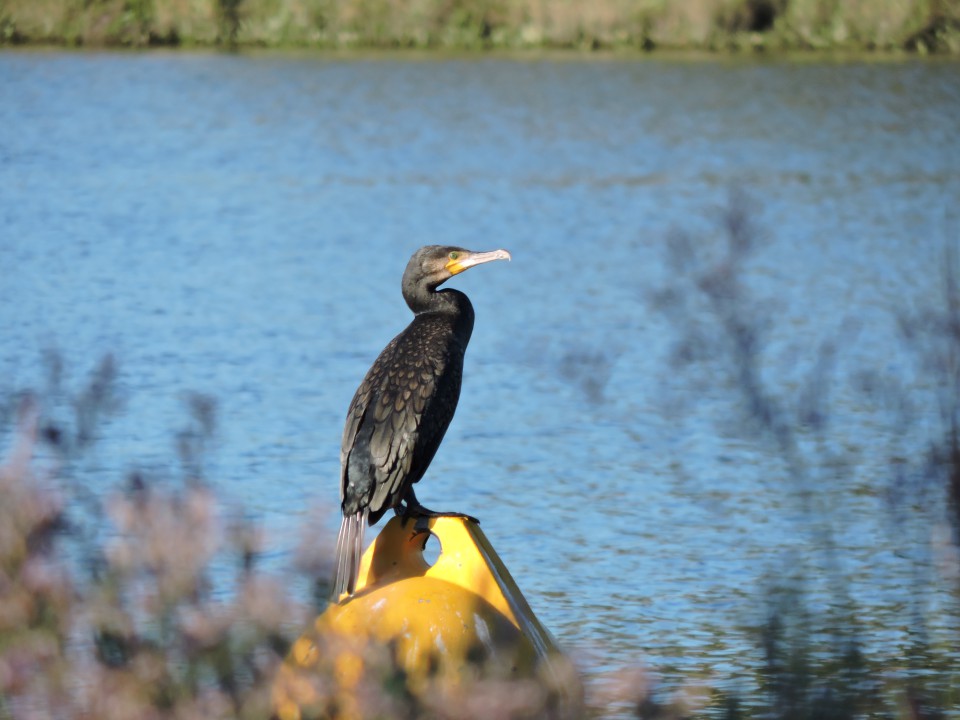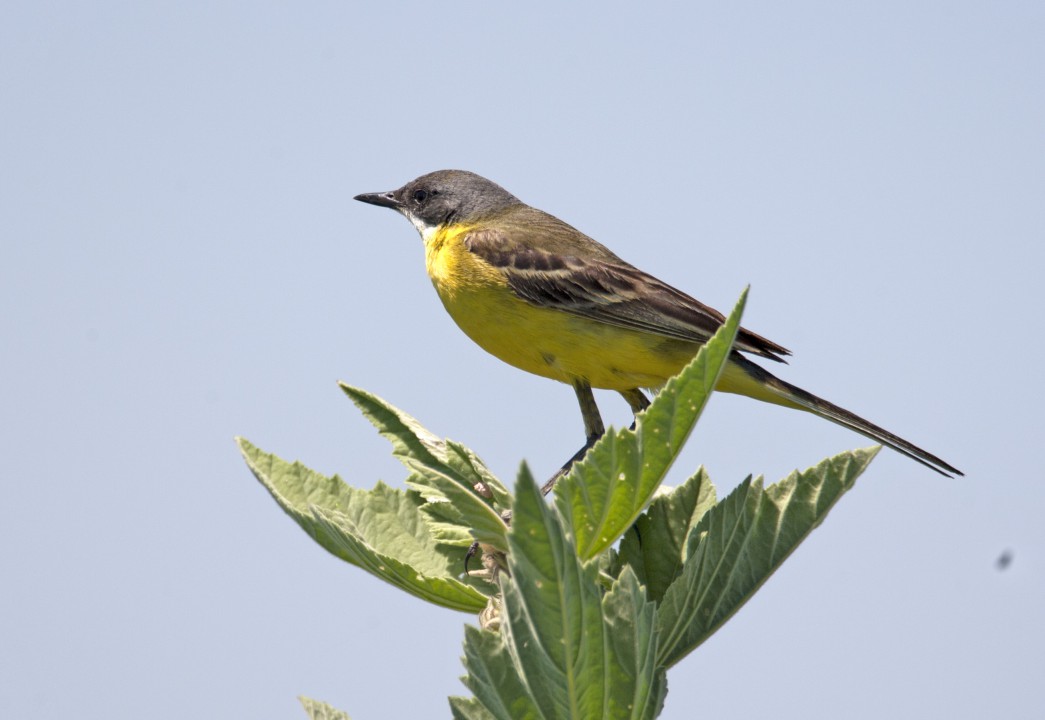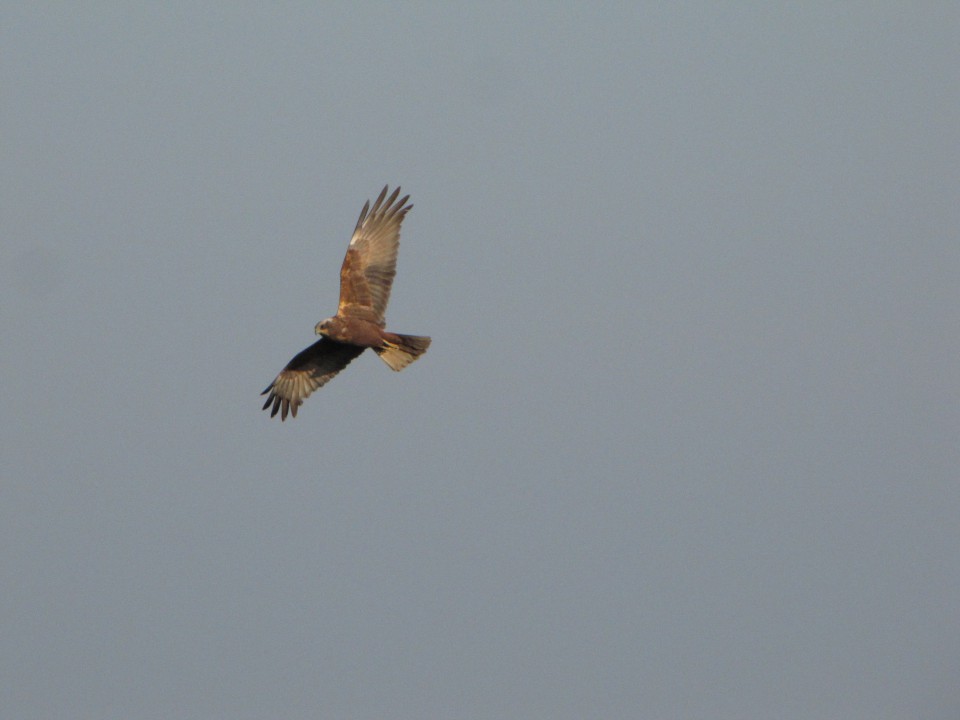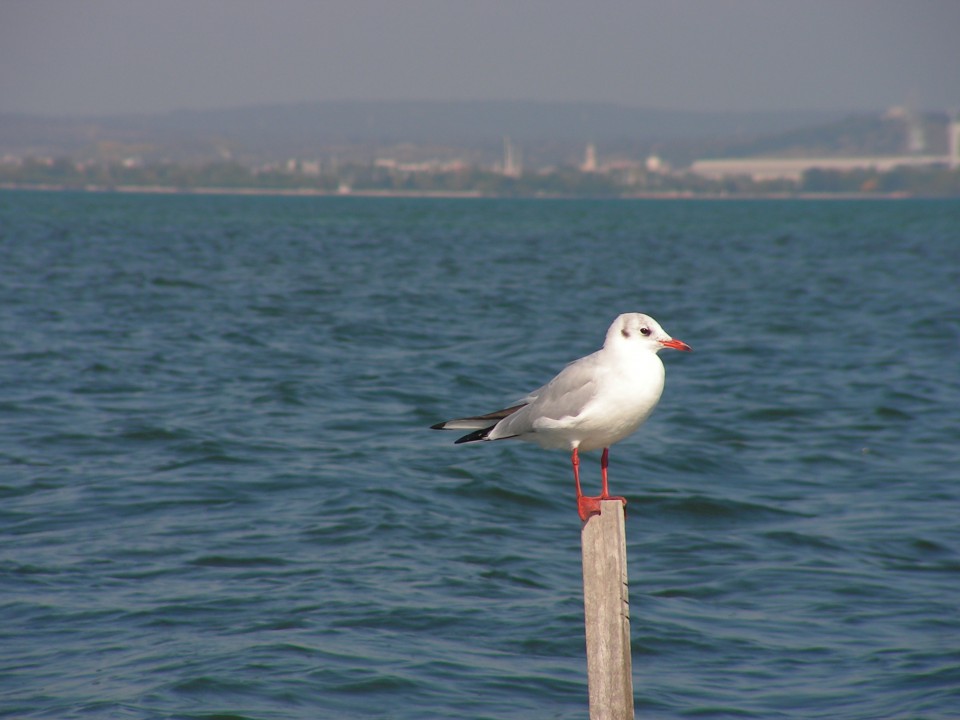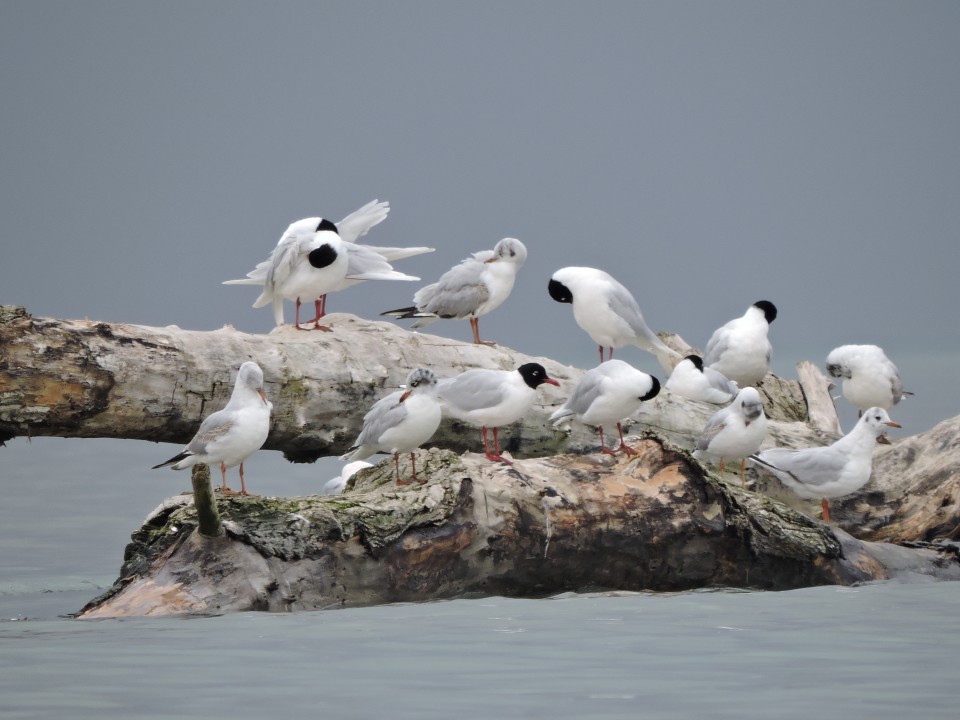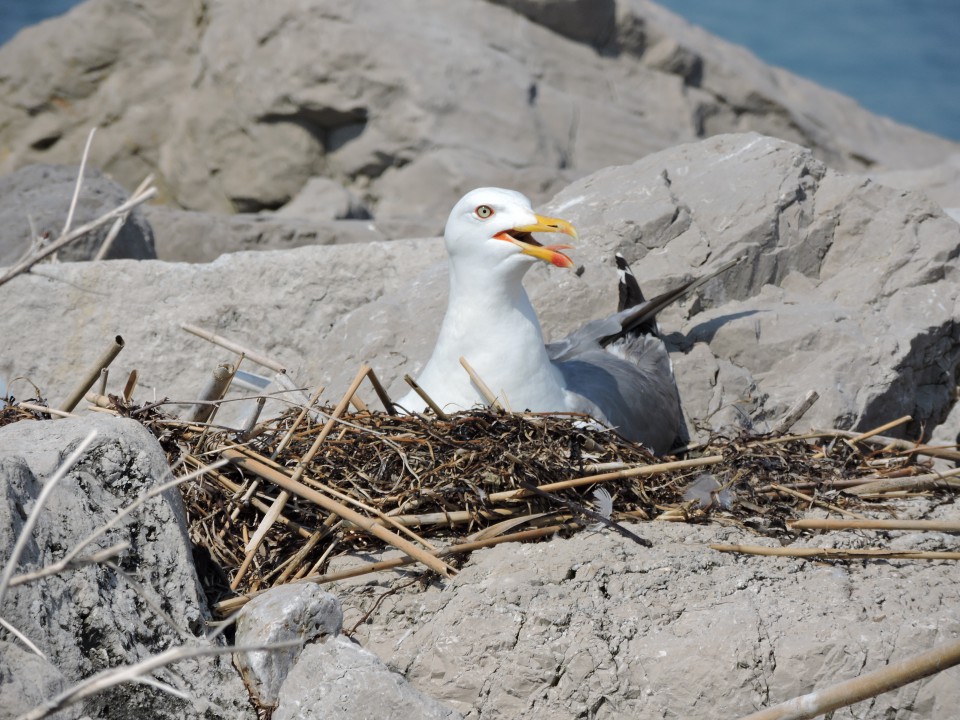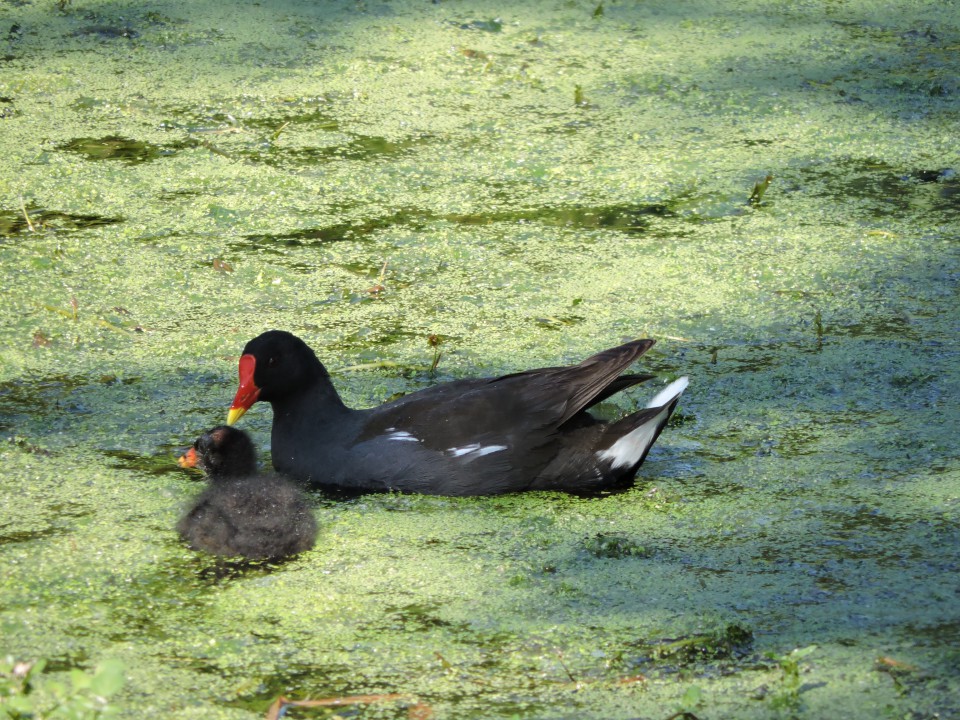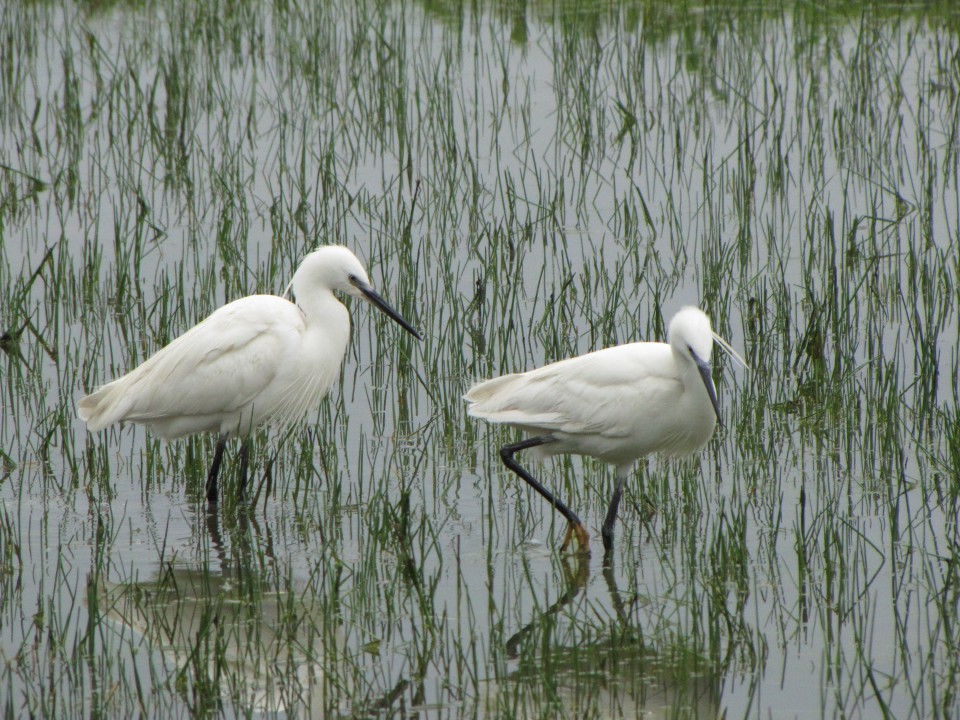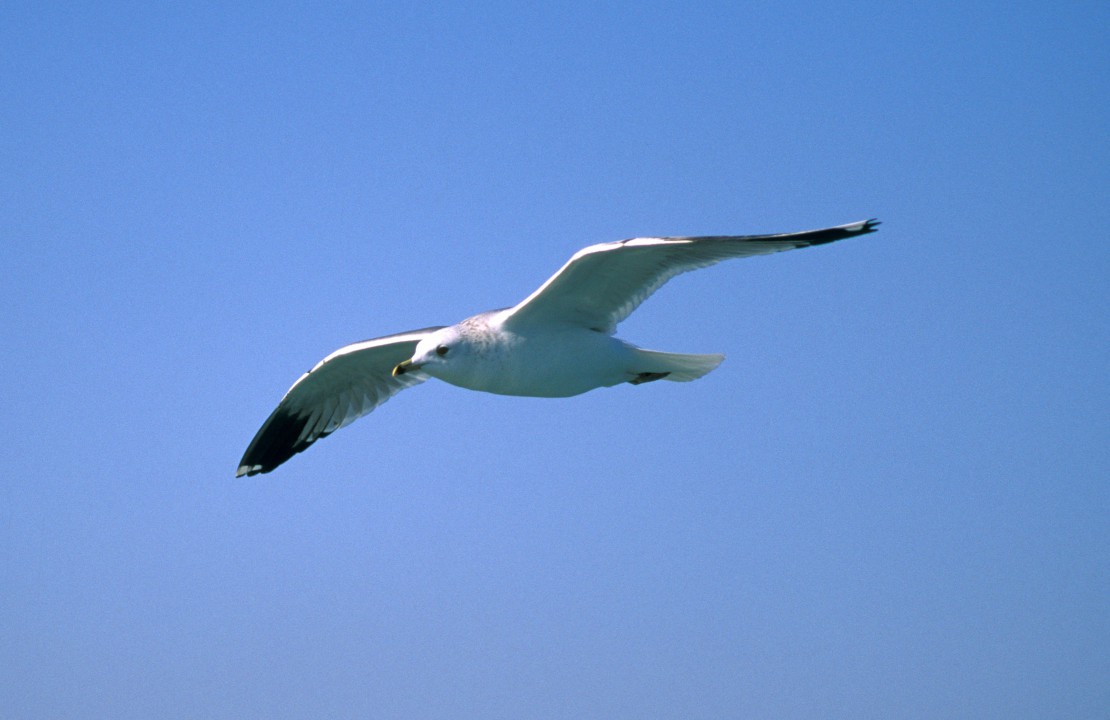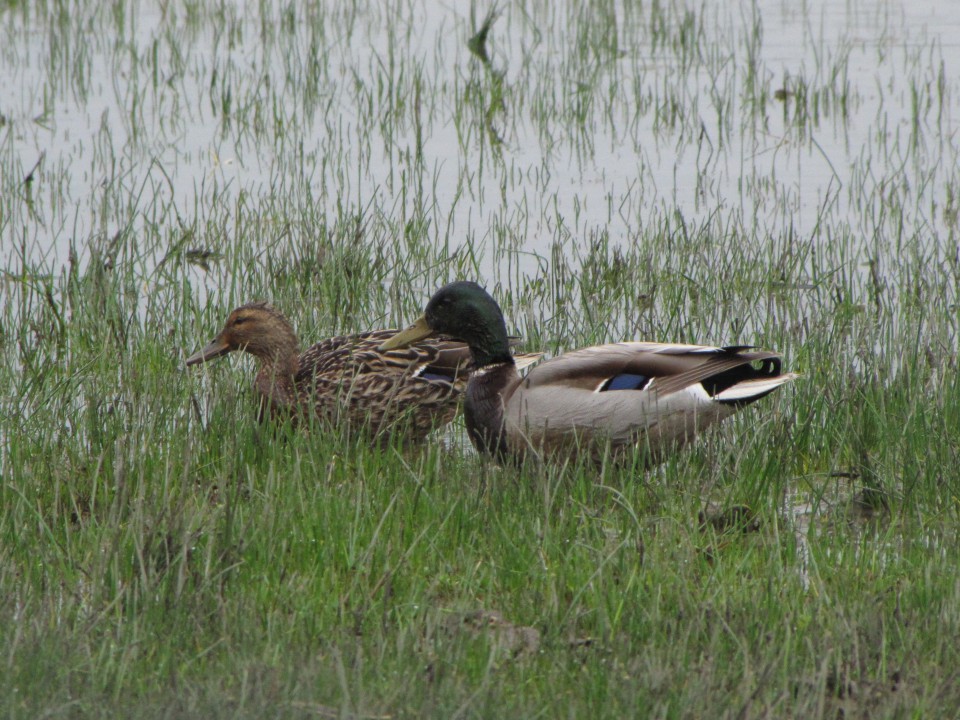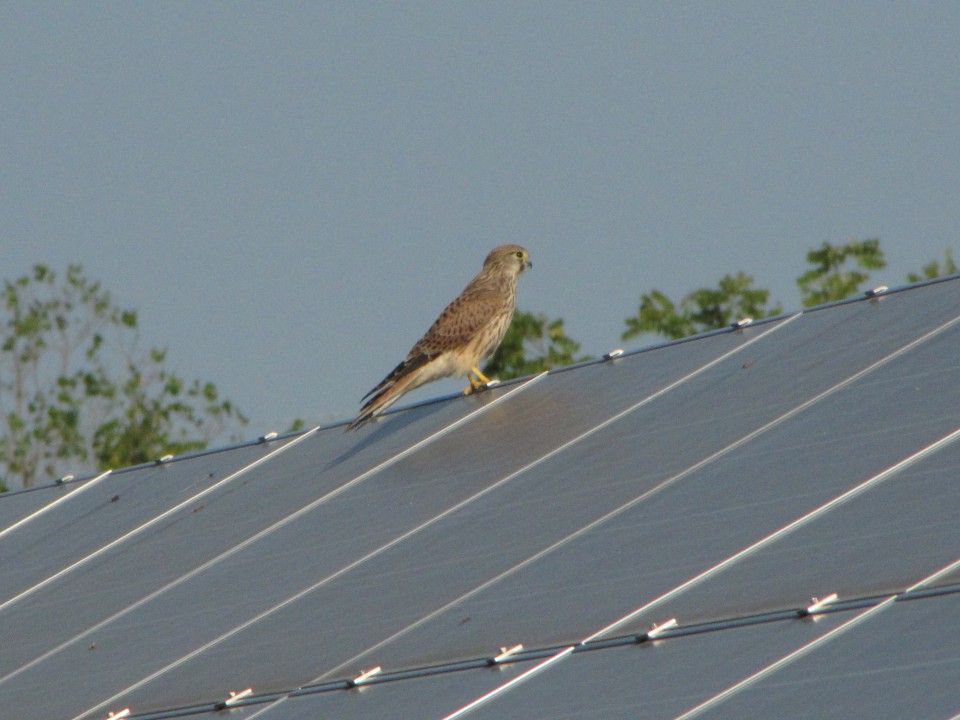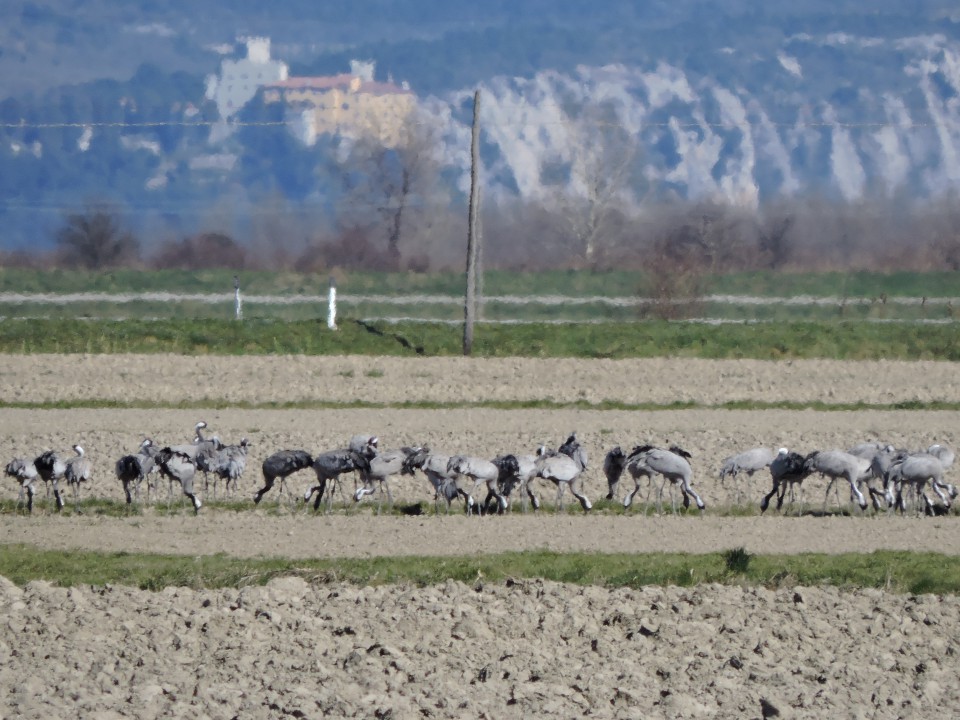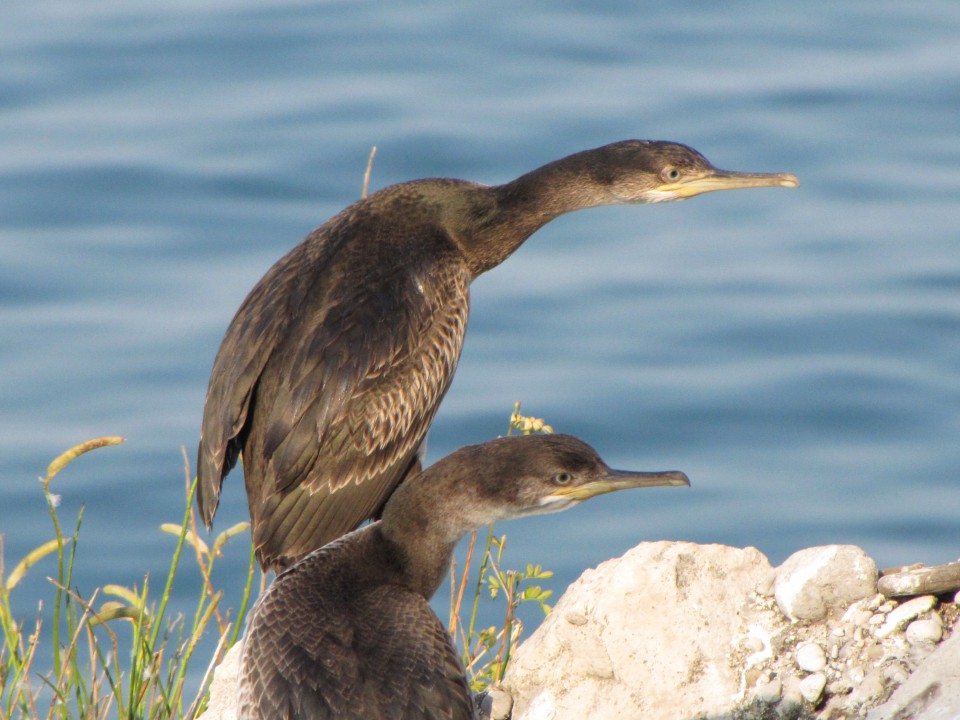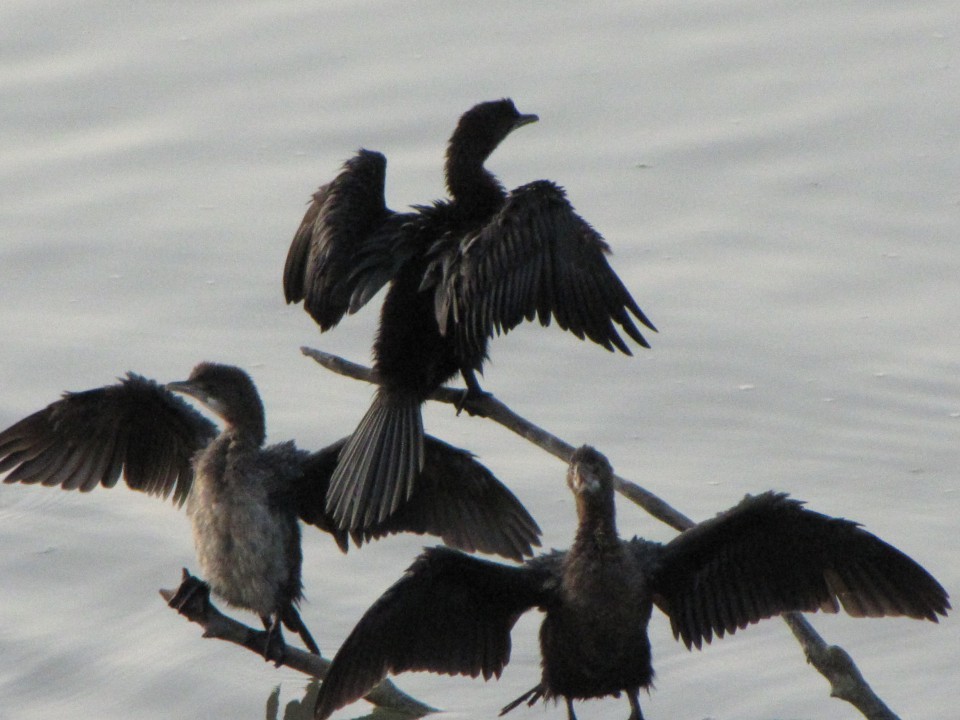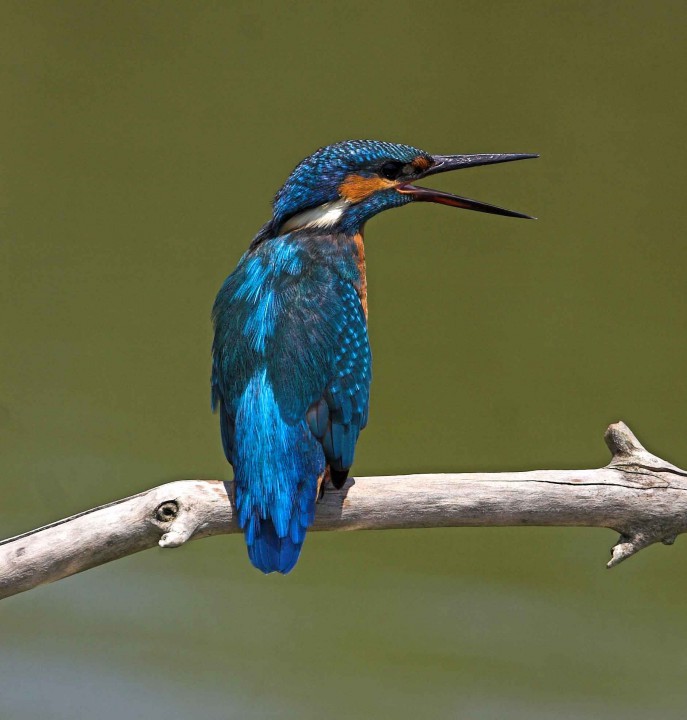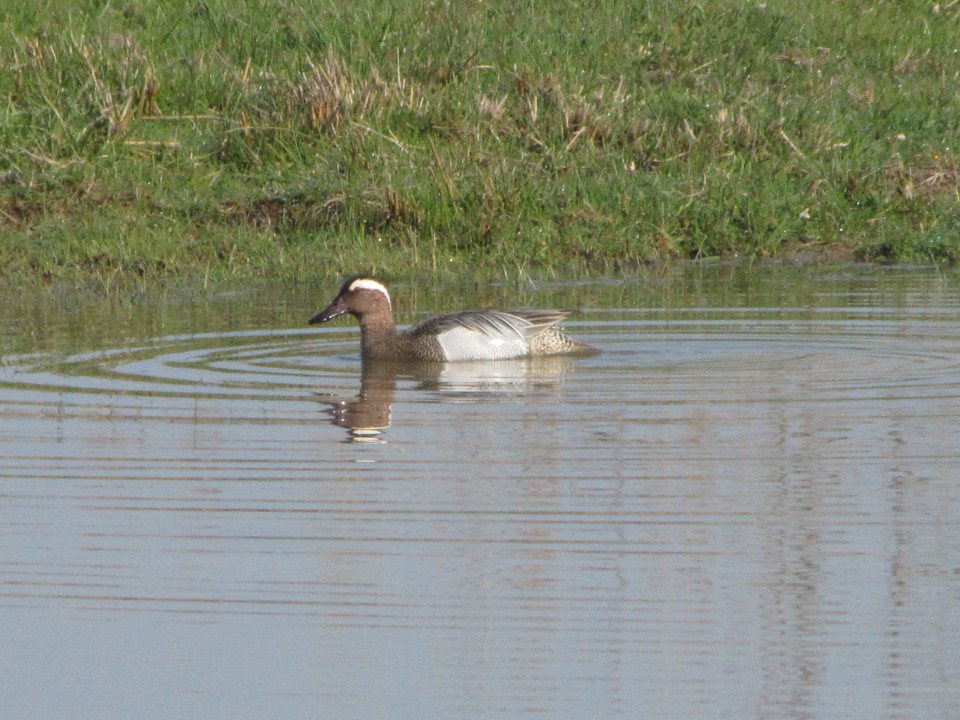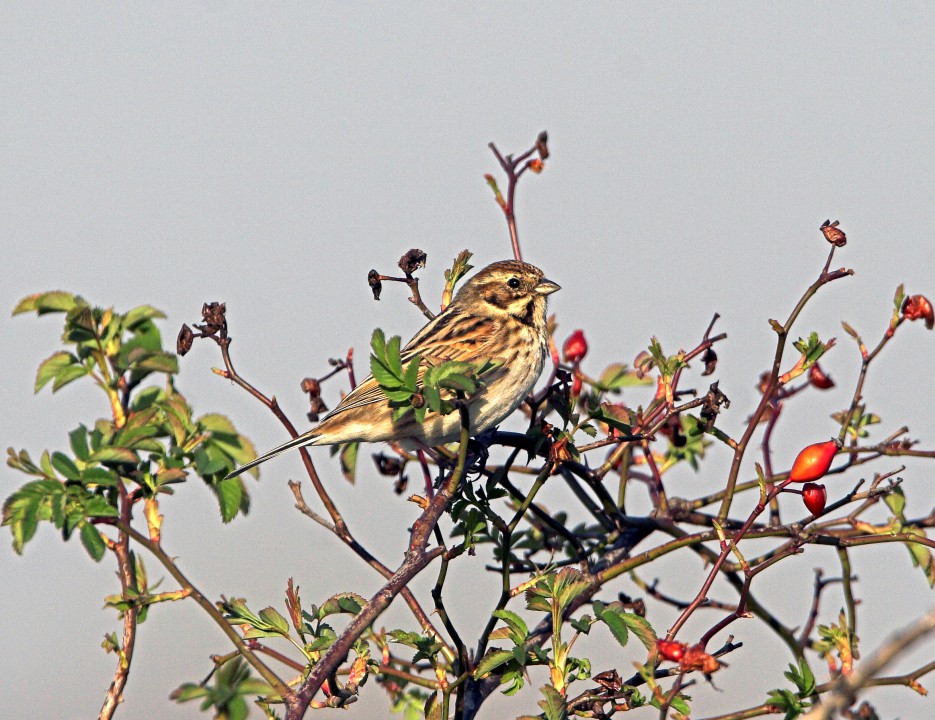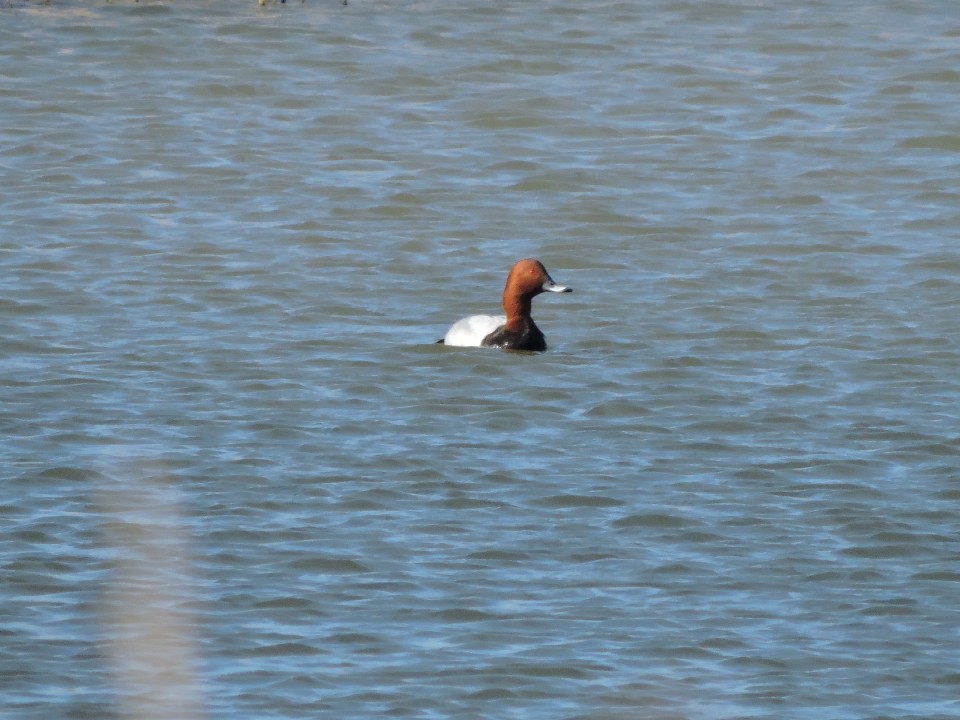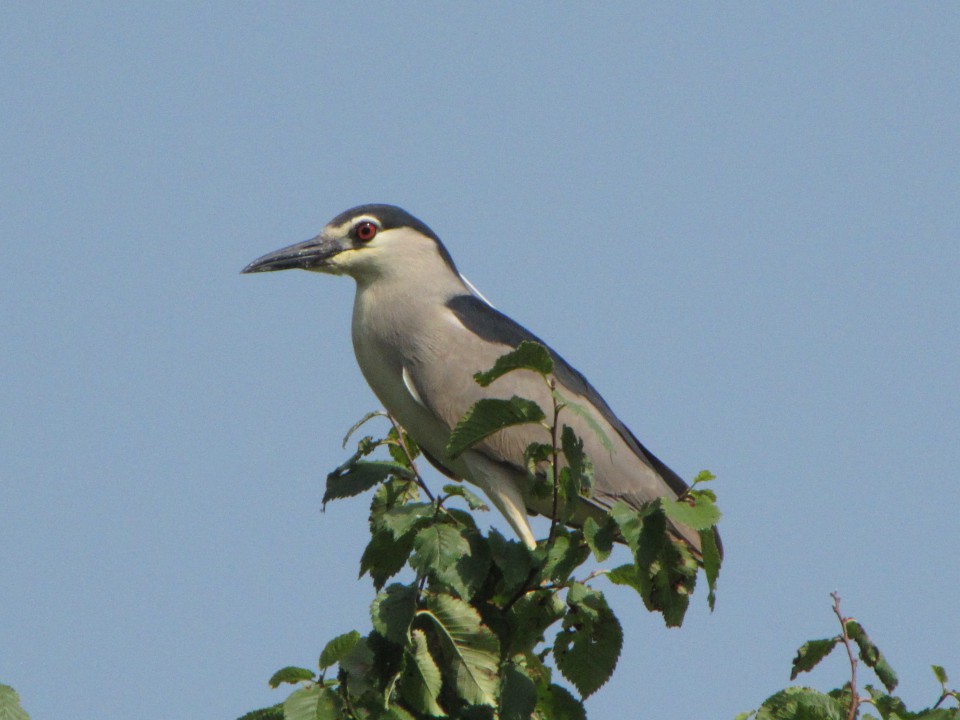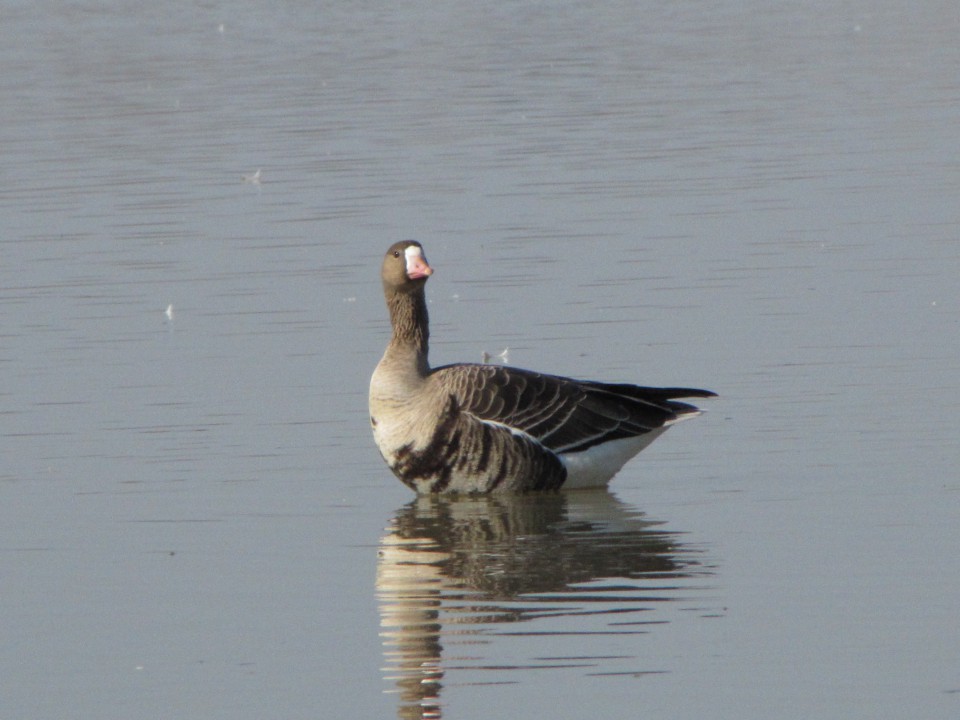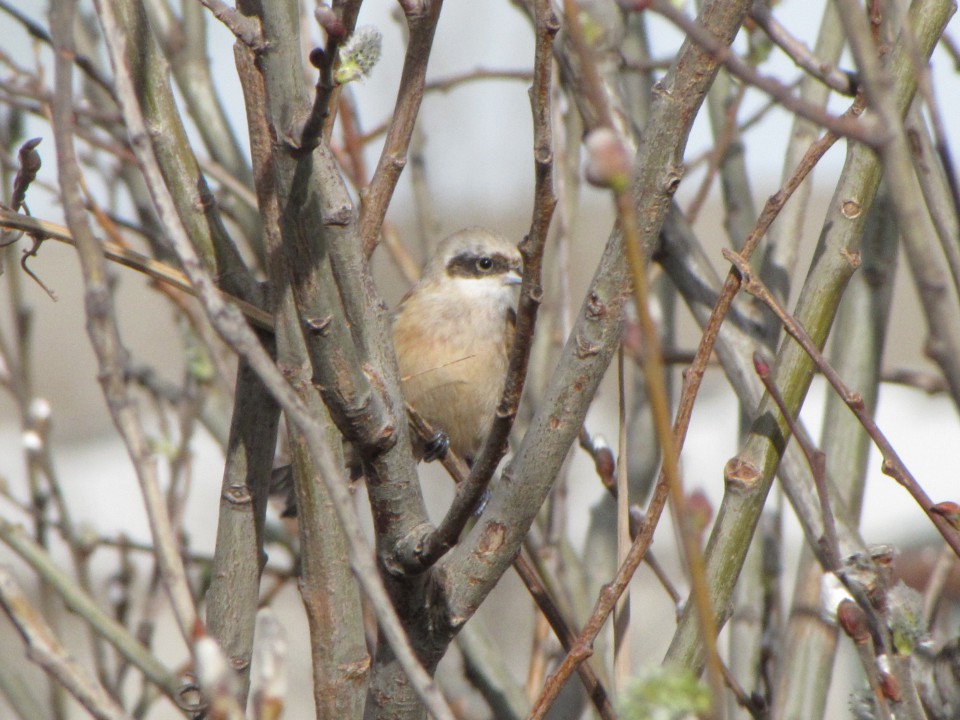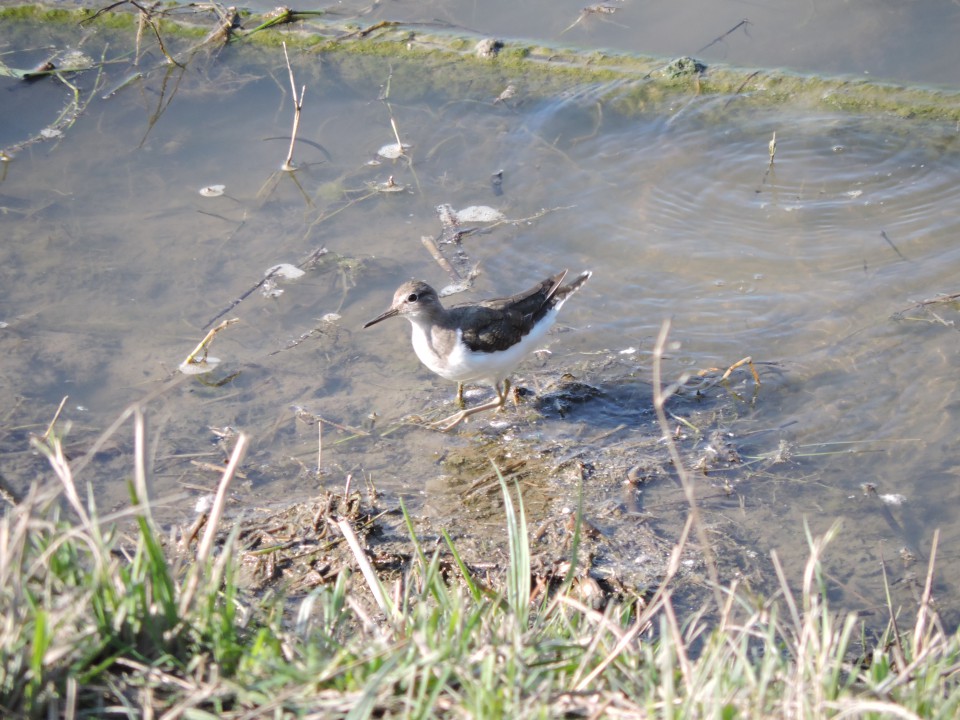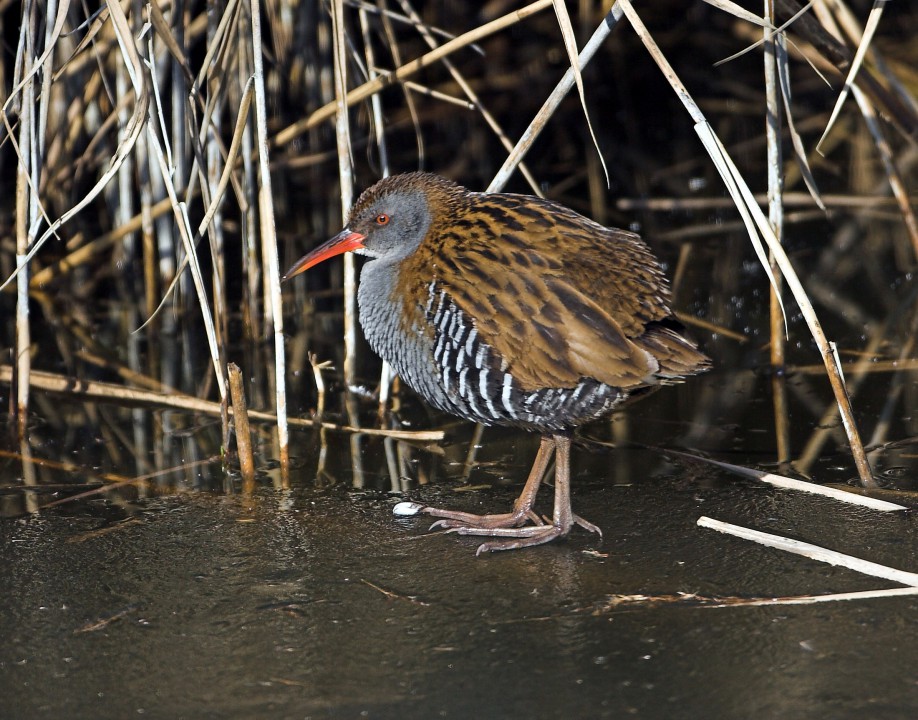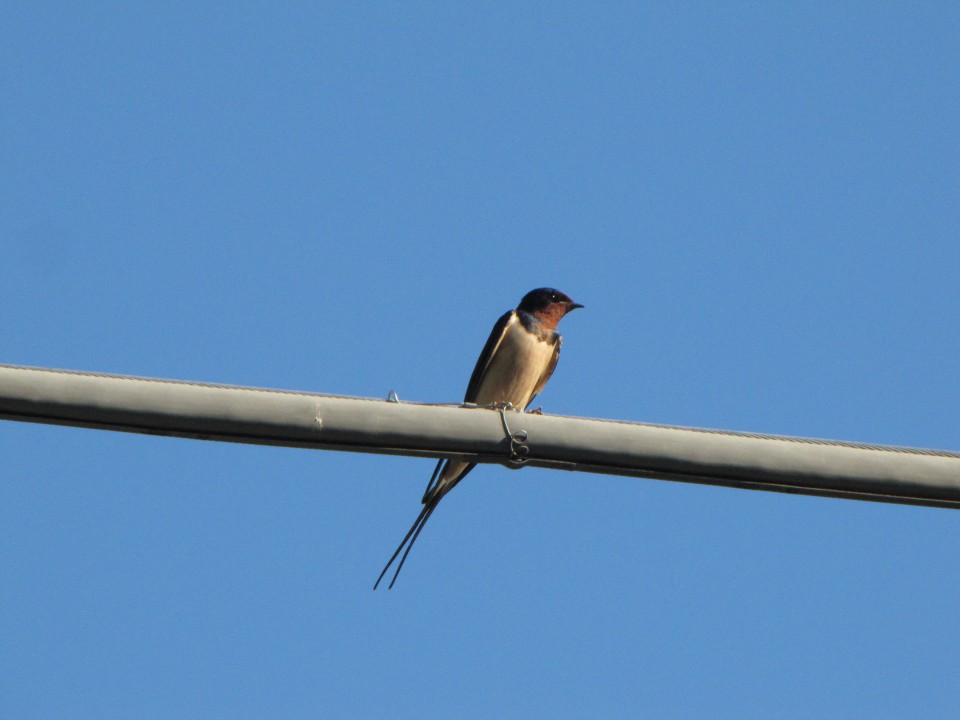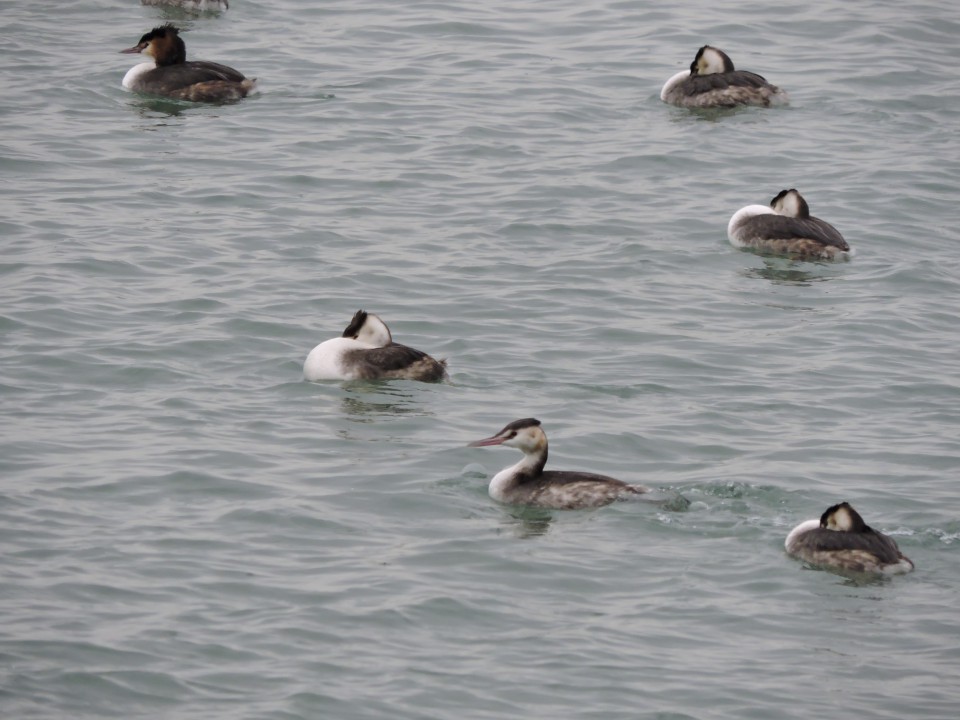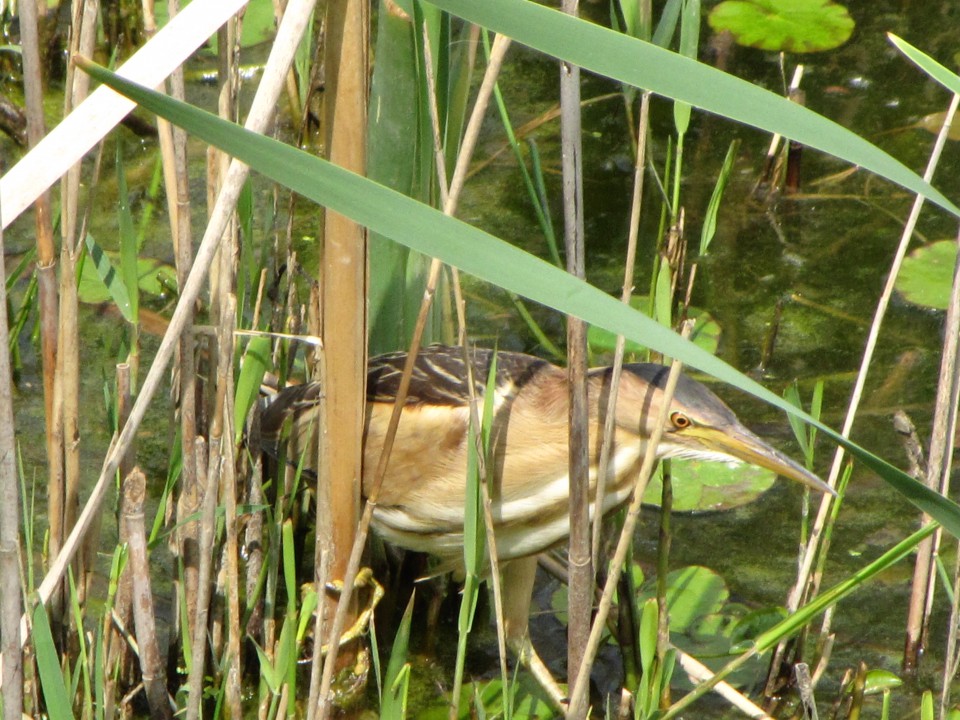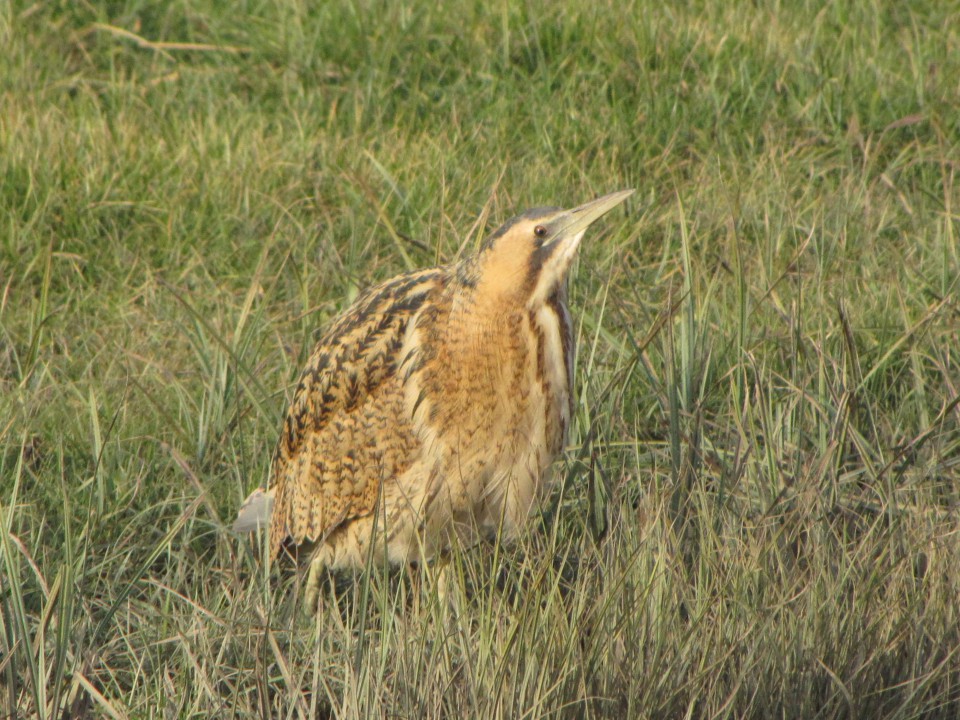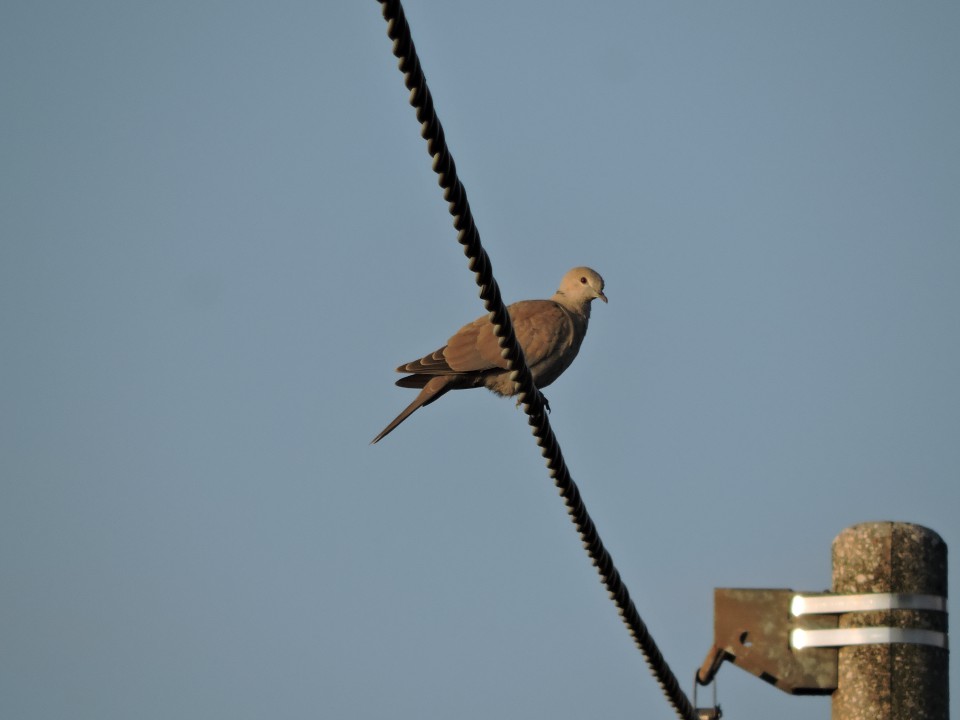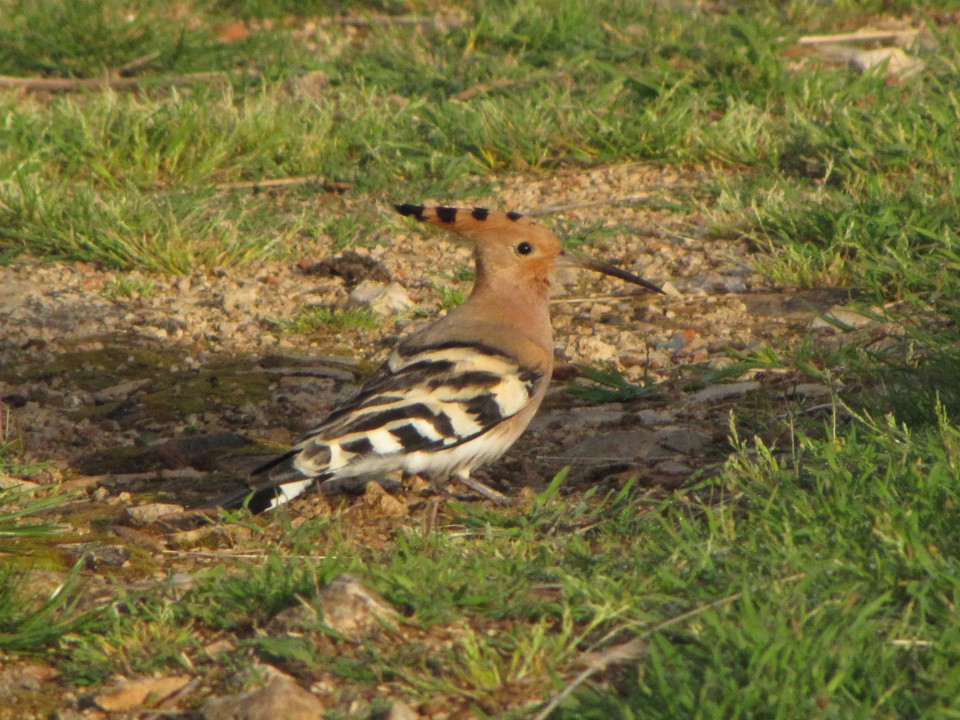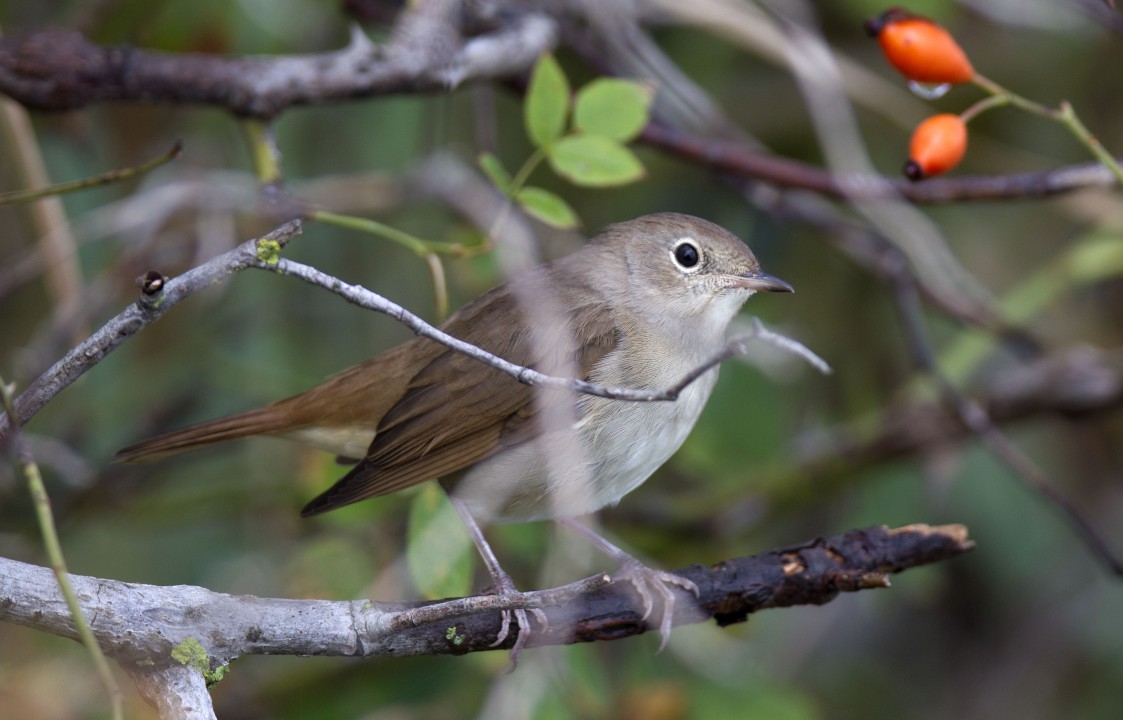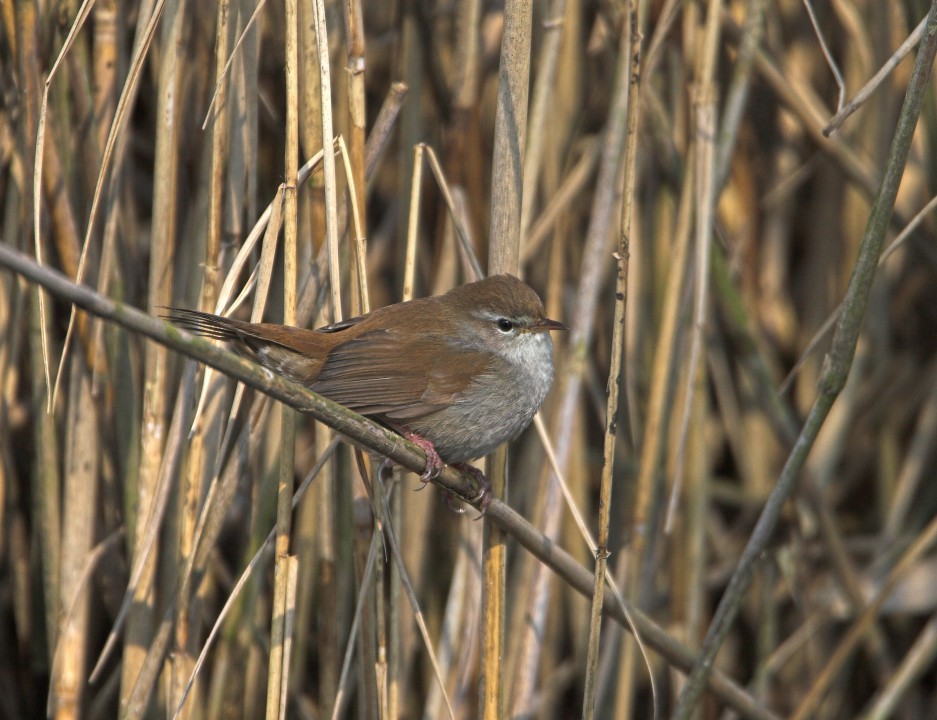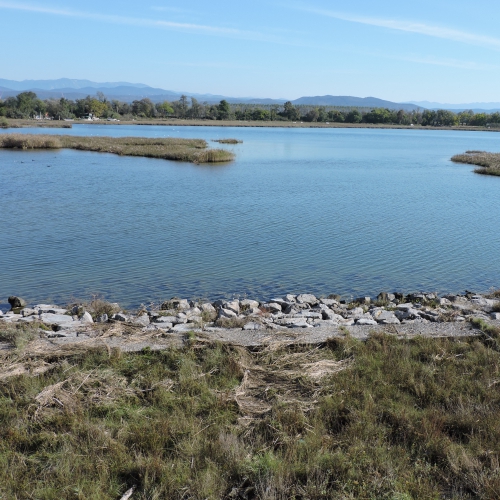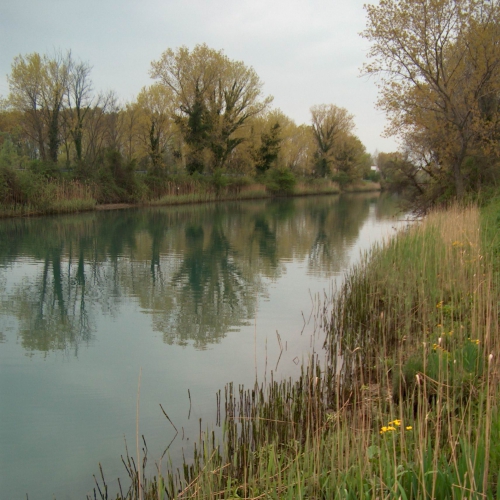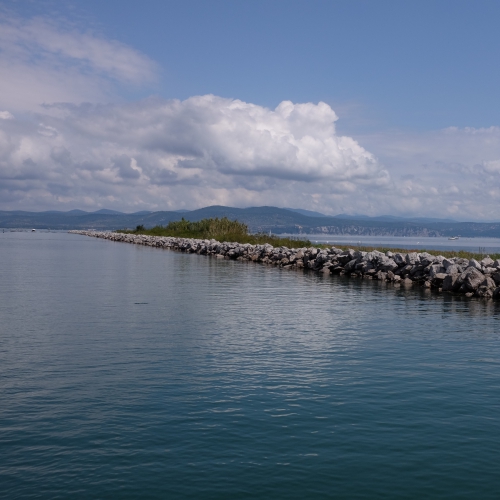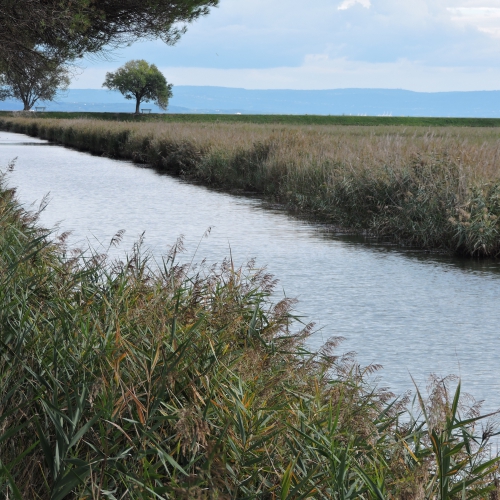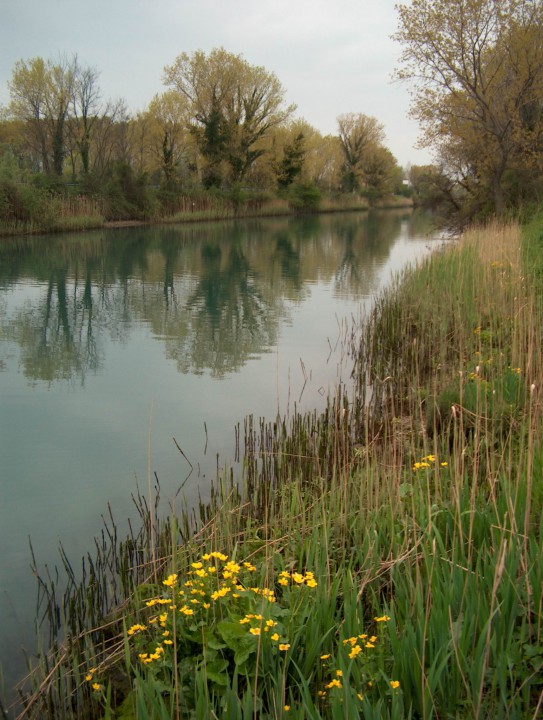
Descrizione
Il canale è stato scavato a scopo di navigazione interna e per drenare le abbondanti acque di risorgiva che impaludavano buona parte della pianura tra Monfalcone e l’Isonzo. Mentre la navigazione è stata accantonata, se si eccettua l’attività remiera per la bonifica, il canale svolge appieno la sua funzione con le idrovore Sacchetti e delle Borlecce nonché numerose porte vinciane che scaricano nel corso d’acqua. Il Brancolo attrae numerosi pescatori sportivi per la ricchezza di cefali. Limitate zone umide e boscate sono sopravissute alla bonifica nella zone di Bosc Grand, Fiumisin e Schiavetti- Cavana.
Vegetazione
Forma estesi canneti in particolare in corrispondenza delle foci fluviali. Resiste ad una moderata salinità riducendo la taglia. Viene...
Forma popolamenti puri intorno alle “olle “ di risorgiva ed è presente lungo i corsi d’acqua e nelle golene su suoli...
Specie nordamericana ampiamente diffusa nelle zone golenali e lungo i litorali. Si tratta di una specie esotica infestante che modifica fortemente...
E’ la quercia tipica della bassa pianura con suoli profondi e umidi. Presente nei boschi planiziali, lungo i corsi d’acqua e nei...
Frequente nei boschi planizali dove predilige le stazioni più umide. Si trova lungo i fiumi e nei pressi delle risorgive. Piuttosto...
Pianta ben diffusa nelle zone umide d’acqua dolce ed il reticolo idrografico minore che ospitano in aprile- maggio le vistose fioriture...
Si trova lungo i fiumi, nelle risorgive e accompagna il reticolo idrografico minore su terreni umidi e torbosi. Può formare boschi puri in...
Specie arborea frequente lungo i fiumi e i litorali soprattutto su suoli sabbiosi. Di bel portamento viene usato come alberatura su viali e nei...
Come il pioppo bianco è frequente lungo i fiumi e i litorali ma risulta meno legato ai suoli sabbiosi. Una varietà ibrida viene...
Specie di origine nordamericana diffusa nelle zone coltivate e lungo I fiumi. Utilizzata per paleria e legna da ardere.
Questa pianta dalla vistosa fioritura estiva è ben diffusa nelle zone umide d’acqua dolce e lungo il reticolo idrografico minore
Frequente in molti ambienti anche lontano dall’acqua è tra i principali costituenti insieme a pioppi dei boschi ripariali e...
Arbusto o piccolo albero dalla forma globosa normalmente presente lungo i fiumi di risorgiva, nei canneti su terreni torbosi spesso allagati.
Tradizioni
L'idrovora Sacchetti, recentemente restaurata ed anche visitabile, con l’idrovora delle Borlecce servono l'intera bonifica, per la parte a...
Ambienti
Nel secolo scorso vaste zone lagunari e palustri circumlagunari sono state bonificate per ricavare nuove zone agricole, industriali ed urbane. Per...
La linea di costa che un tempo (fino agli anni Venti) si modificava naturalmente a seconda dell’innalzamento ed abbassamento del livello del...
Non è sempre facile individuare una chiara separazione tra gli ambienti alofili (salmastri) delle lagune e quelli d’acqua dolce alle...
Uccelli
cm 85-100, sessi simili. Piumaggio bianco, becco giallo che diviene nero in periodo riproduttivo. Presente tutto l’anno, non nidifica. Numeroso...
cm 84-102, sessi simili. Presente tutto l’anno nidifica in colonia in boschetti lagunari e altre zone boscate dell’entroterra. La nidificazione...
cm 45-52, sessi simili. Presente tutto l’anno. Si riproduce in alcuni boschetti lagunari associato ad altre specie di aironi. La nidificazione è...
cm 70-90, Sessi simili. Presente da fine marzo a settembre nidifica in colonia in rigogliosi canneti nella laguna di Marano e nei ripristini della...
cm 45-55, spiccato dimorfismo, il maschio è grigio con le punte delle ali nere, la femmina è bruna, entrambi hanno il groppone bianco. Presente...
cm 34-38, è l’ anatra più piccola. Specie prevalentemente svernante, alcune coppie nidificano e concentrazioni si osservano nelle zone umide...
cm 19-21, sessi simili. Esiste una forma grigia ed una rossastra. E’un piccolo gufo con ciuffi auricolari ed un canto caratteristico ed ...
cm 23-28, sessi simili. Molto mimetico con un piumaggio bruno striato, ha un lungo becco diritto ed un volo caratteristico a zig-zag. Presente da...
cm 46-56, caratteristico “specchio alare” bianco. Specie prevalentemente svernante, alcune coppie nidificano. Frequenta le zone umide d’acqua...
cm 12.5-14, piumaggio bruno chiaro con ventre chiaro. Presente da aprile a settembre nei canneti dove nidifica. E’ la specie più frequente tra i...
cm 16-20, essi simili. Bruno chiaro con parti inferiori biancastre. Presente da aprile a settembre nei canneti dove nidifica. Il forte canto di...
cm 48-57, sessi simili. Brunastro con lungo becco ricurvo. Presente tutto l’anno ma non nidifica. Forma aggregazioni durante l’alta marea su...
cm 37-45, sessi simili. Brunastro con becco ricurvo, più corto del chiurlo maggiore, presenta caratteristiche strie scure sulla testa. Presente...
cm 140-160, colore bianco, grigio nei giovani, tubercolo alla base del becco, più evidente nel maschio. Presente tutto l’anno, numeroso presso...
cm 23-28, sessi simili, grigiastra. E’il rapace notturno più frequente e si osserva nelle zone agricole spesso presso edifici dove nidifica....
cm 38-43 sessi simili, grigio con fasce alari bianche. Presente tutto l’anno nidifica comunemente nei boschetti delle isole lagunari e delle zone...
cm 77-94, sessi simili. Come pellicani e sule ha le 4 dita congiunte dalla membrana natatoria. Specie presente tutto l’anno, aumenta notevolmente...
cm 15-16, maschio con capo grigio e gola bianca nella sottospecie cinerocapilla , ventre giallo, coda lunga con timoniere esterne bianche. Durante le...
cm 43-55, spiccato dimorfismo, il maschio è più colorato mentre la femmina è tutta scura con testa e spalle giallo paglierino. Presente tutto...
cm 36-42, sessi simili. Nera fumo con becco e placca frontale bianca. Corre sull’acqua per prendere il volo. Presente tutto l’anno, nidifica con...
cm 35-39, sessi simili. A febbraio veste il cappuccio bruno scuro dell’abito nuziale che poi perde in luglio-agosto. Presente tutto l’anno...
cm 37-40, sessi simili. Rispetto al gabbiano comune ha il becco più massiccio e rosso corallo, la testa nera-durante la nidificazione- e le punte...
cm 52-58, sessi simili. Grigio superiormente, bianco inferiormente. Presente tutto l’anno e nidificante abbondante in laguna, sui tetti di Trieste...
cm 27-31, sessi simili. Scura con coda in parte bianca e becco rosso e giallo. Presente tutto l’anno, nidifica nelle zone umide d’acqua dolce e...
cm 55-65, sessi simili. Piumaggio bianco con lunghe penne, dette egrette. su nuca e dorso durante il periodi riproduttivo. Presente tutto l’anno...
cm 40-46, essi simili. Ricorda un gabbiano reale di minori dimensioni. Presente da novembre ad aprile, numerosa in alcuni inverni, Frequenta il mare,...
cm 50-60. spiccato dimorfismo, è il progenitore dell’anatra domestica. Presente tutto l’anno, molto adattabile, frequenta sia le zone umide che...
31-37 cm , il maschio ha coda e capo grigi, parti superiori rossastre, La femmina ha coda rossastra barrata. Presente tutto l’anno, nidifica in...
cm 96-119, sessi simili. Grigia con il capo bianco e nero e le punte delle ali nere. Vola con il collo teso, a differenza degli aironi che lo...
cm 68-78, sessi simili. Il breve ciuffo è presente negli adulti in inverno e inizio primavera. Presente tutto l’anno diviene raro in inverno e...
cm 45-55, sessi simili Presente tutto l’anno nidifica in colonie, associato a varie specie di aironi. in alcuni boschetti lagunari. La...
cm 17-19, sessi simili. Azzurro superiormente, rosso inferiormente con grande becco scuro e coda molto corta che in volo lo fanno sembrare un...
cm 37-41, il maschio presenta una caratteristica striscia bianca dall’occhio alla nuca. Specie migratrice è presente da marzo a settembre....
cm 44-52, il maschio presente un caratteristico petto bianco. Specie prevalentemente svernante, alcune coppie si riproducono. Frequenta le zone umide...
cm 13-5-15.5 - il maschio in abito nuziale ha la testa nera. In abito invernale i sessi sono simili, con piumaggio brunastro, con coda relativamente...
cm 40-47, il maschio presenta un caratteristico piumaggio bianco e nero. Anatra tuffatrice presente prevalentemente durante lo svernamento. Ha...
cm 42-49, il maschio ha la testa rossastra. Anatra tuffatrice, presente soprattutto durante lo svernamento, alcune coppie nidificano nella laguna di...
cm 58-65, sessi simili, adulti neri e grigi, giovani bruni. Presente dalla primavera all’autunno. Rara d’inverno. Nidifica in colonia associata...
cm 64-78, caratteristiche strie nere sull’addome e fronte bianca. Specie svernante, forma stormi anche numerosi, talora associati ad altre specie...
cm 10-11.5, sessi simili. Testa grigia con stria nera sull’occhio. “teoricamente” presente tutto l’anno in canneti e boschi ripariali, ormai...
cm 18-20,5 bruno chiaro superiormente. bianco sulle parti inferiori. Le ali hanno una sottile barra chiara e vengono spesso bloccate brevemente nel...
cm 48-56, sessi simili, piumaggio molto variabile, in genere bruna con chiazze chiare. Presente tutto l’anno, più numerosa anche in laguna durante...
cm 23-26, sessi simili. Grigio inferiormente, bruno striato superiormente, becco lungo e ricurvo. Presente tutto l’anno, più numeroso d’inverno,...
cm 17-21, sessi simili. Nera superiormente, gola rossa e ventre biancastra. Presente da marzo-aprile e settembre-ottobre, Nidifica sotto manufatti...
cm 46-51, sessi simili Grigio superiormente, biancastro inferiormente, nell’abito nuziale mostra evidenti ciuffi sul capo e guance. Presente tutto...
cm 22-28, il maschio è giallastro e nero sul capo, sul dorso e sulle ali, la femmina è simile ma con brunastro al posto del nero. E’il più...
cm 69-81, sessi simili. Piumaggio mimetico. Presente durante lo svernamento e le migrazioni. Ha nidificato saltuariamente. Frequenta le zone umide...
cm 29-33, sessi simili. Piumaggio beige chiaro con collarino nero. Presente tutto l’anno, spesso associata agli insediamenti umani in città,...
cm 25-29, sessi simili, piumaggio arancio barrato di nero, cresta erettile sul capo, volo sfarfallante. Presente da aprile a settembre ed è...
cm 15-16.5, sessi simili. Bruno rossastro superiormente più chiaro nelle pari inferiori. Presente da aprile a settembre. Nidifica in boschetti...
cm 13.14, sessi simili. Piumaggio bruno rossastro, Canto forte e scoppiettante che risuona spesso al nostro arrivo nel territorio di un maschio....

